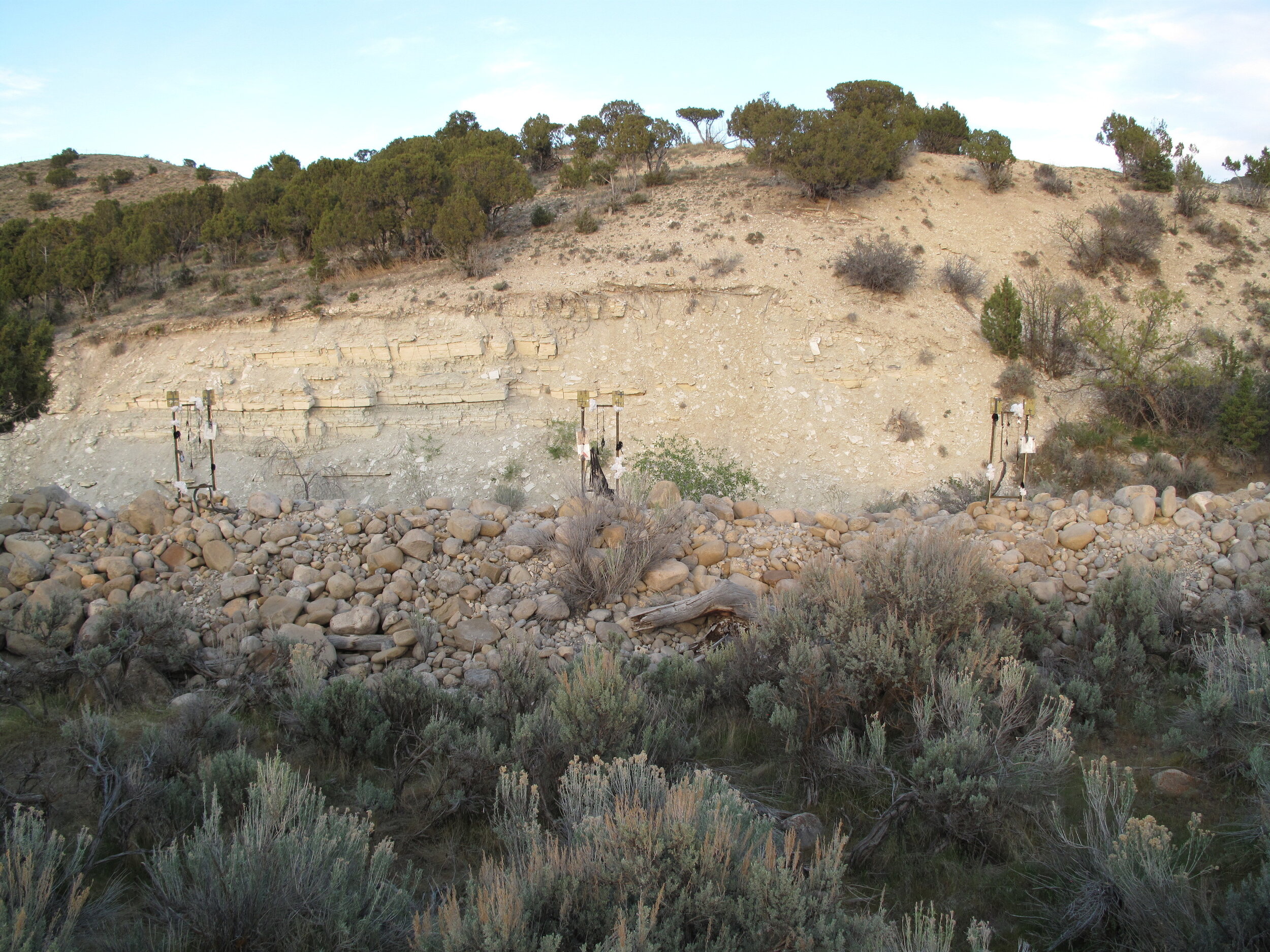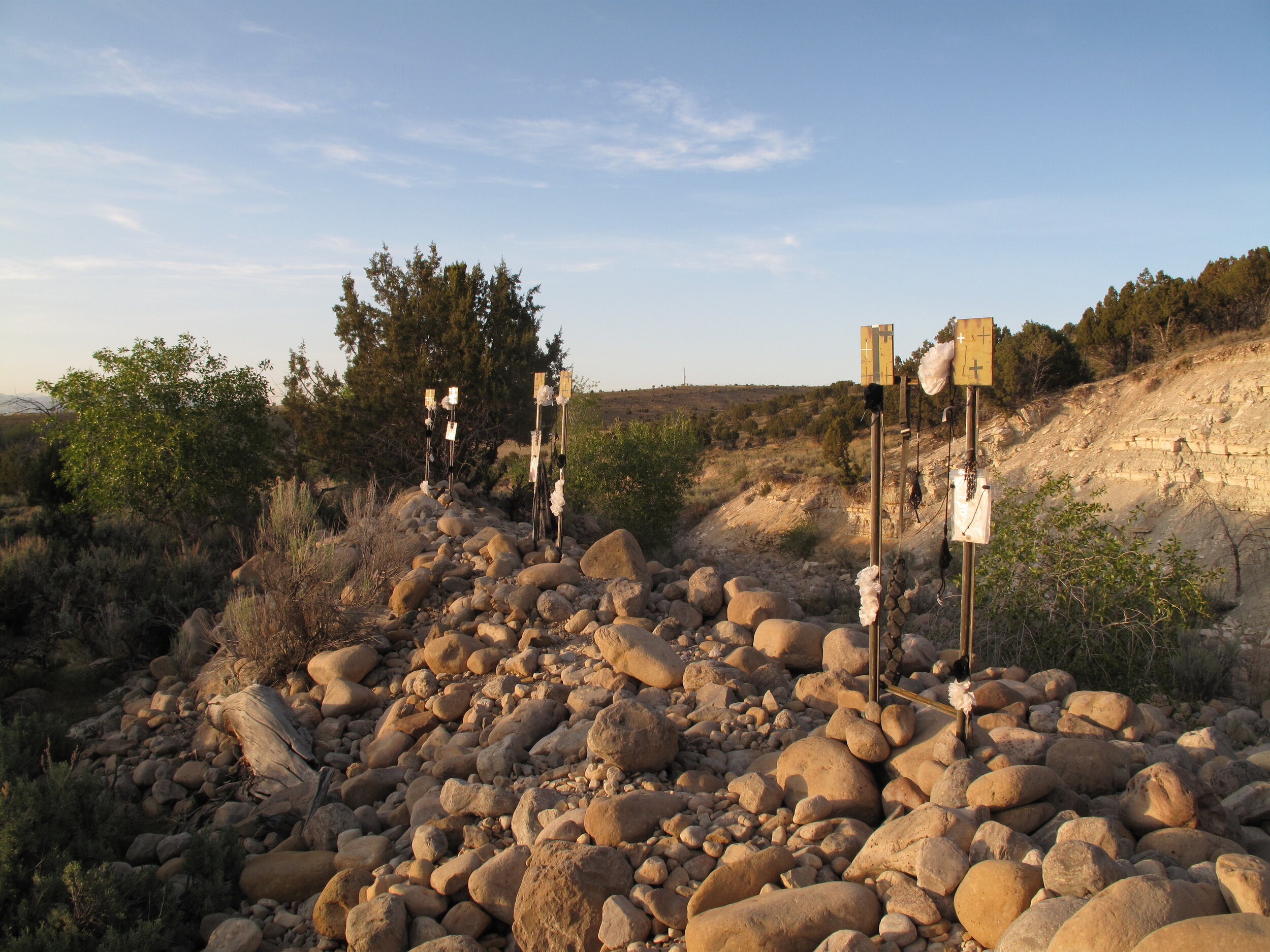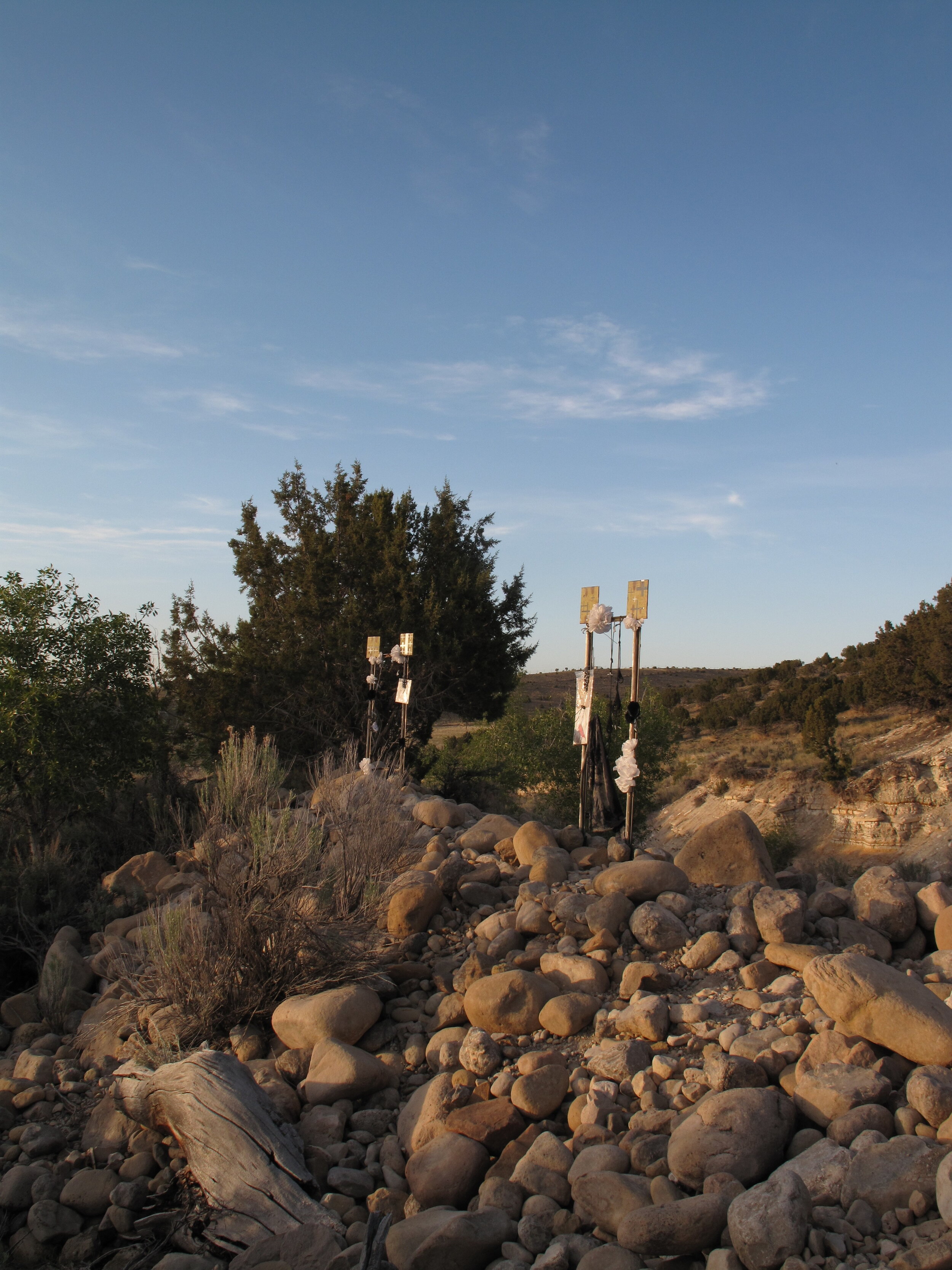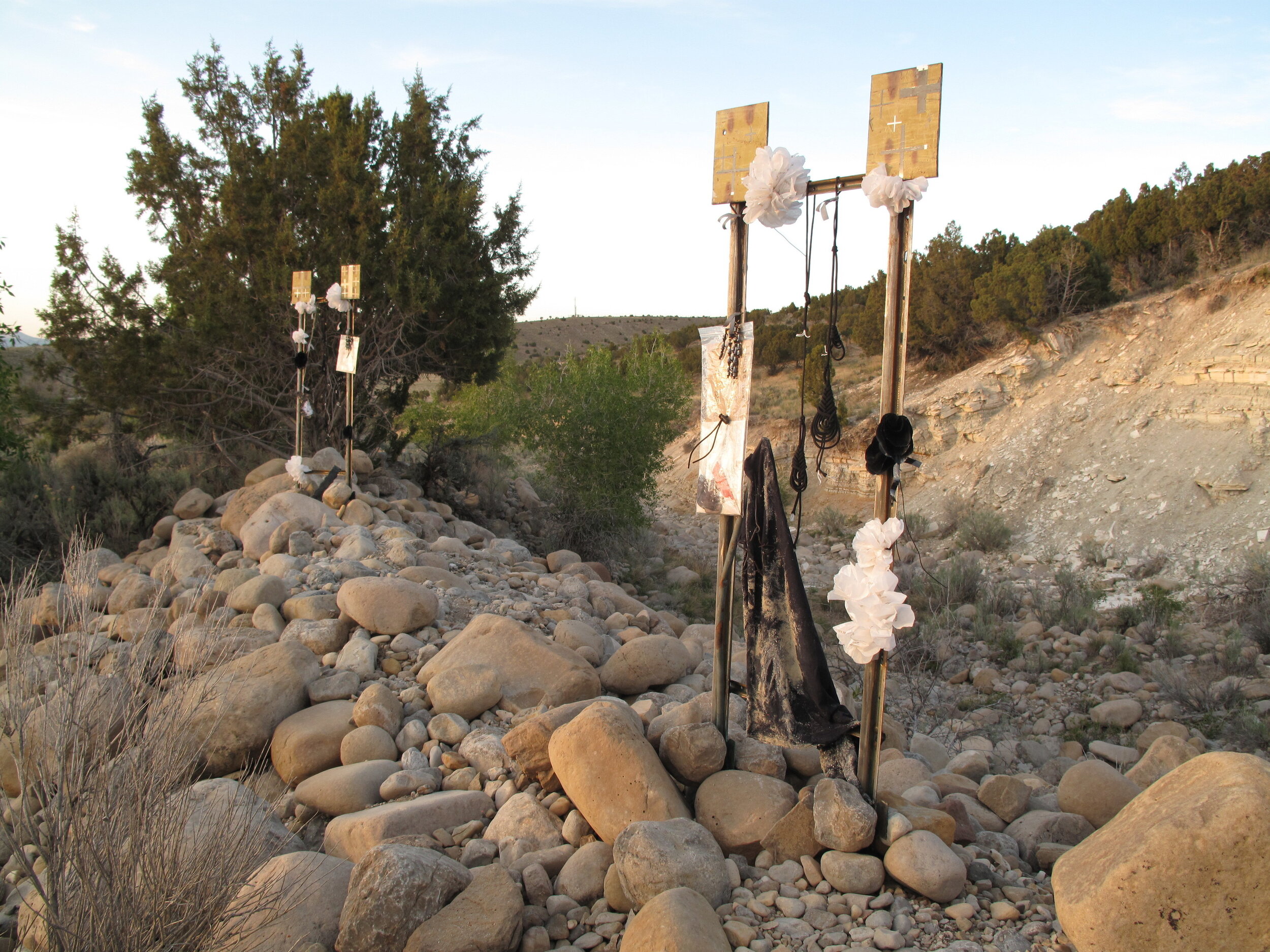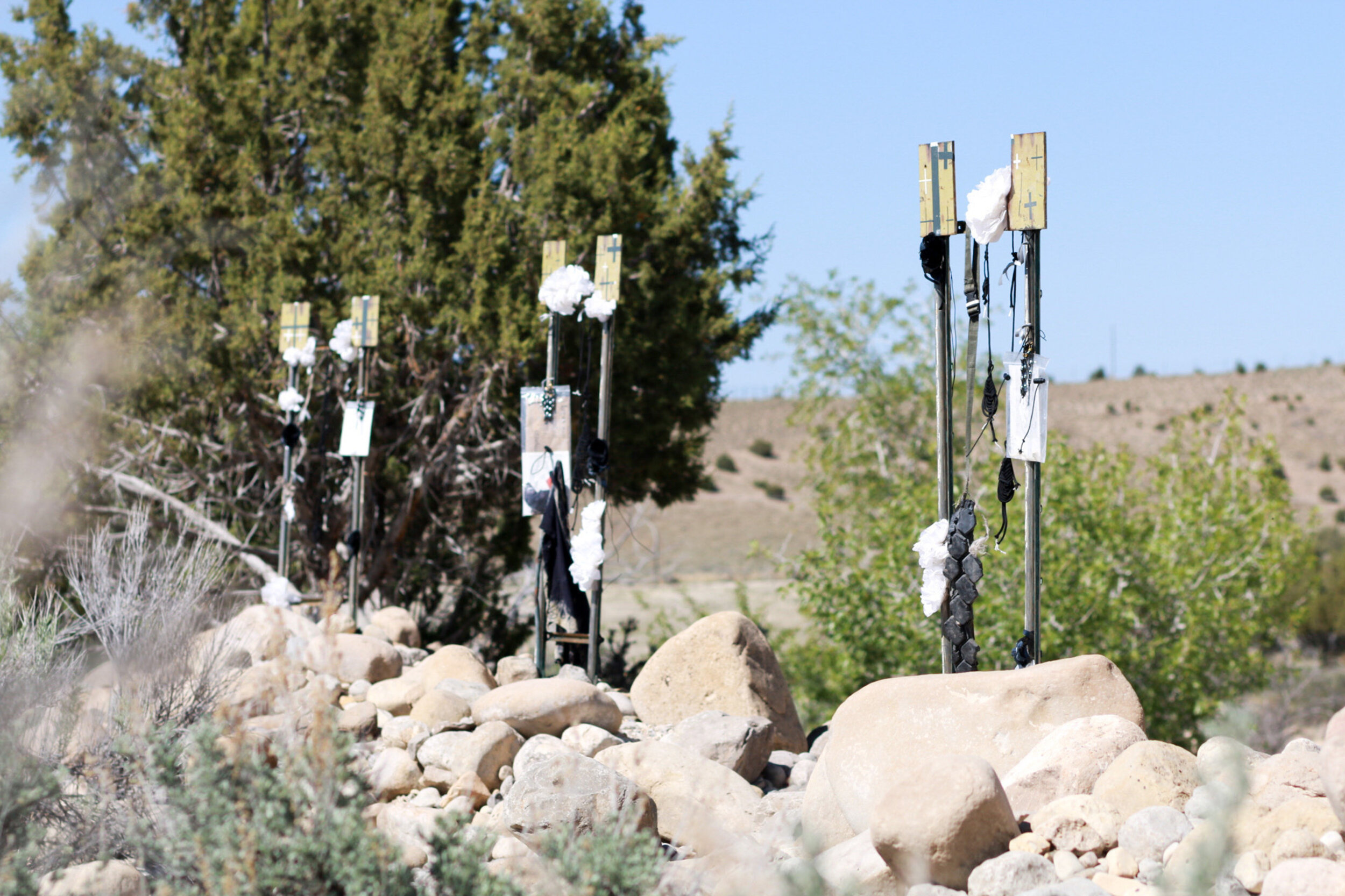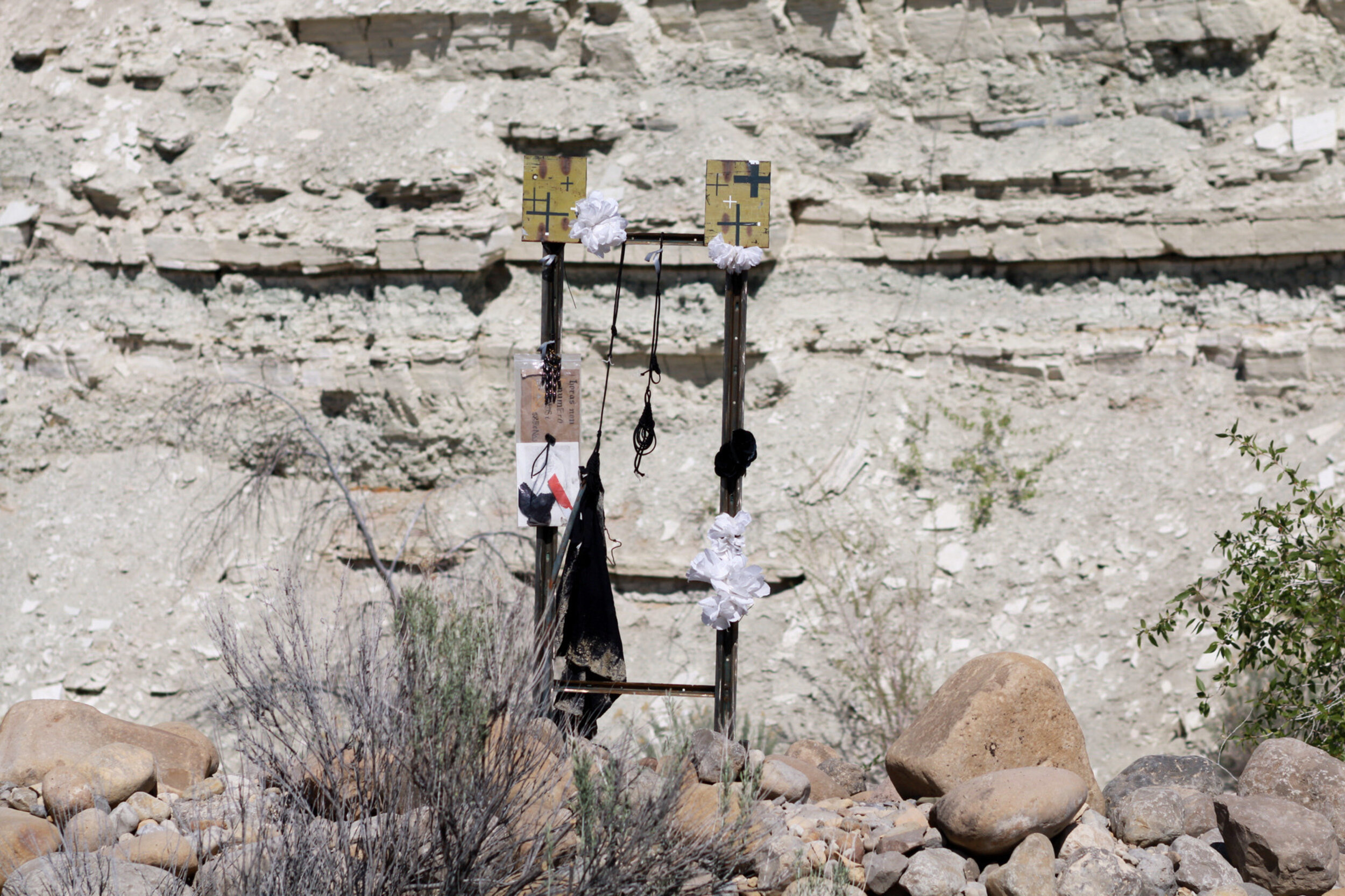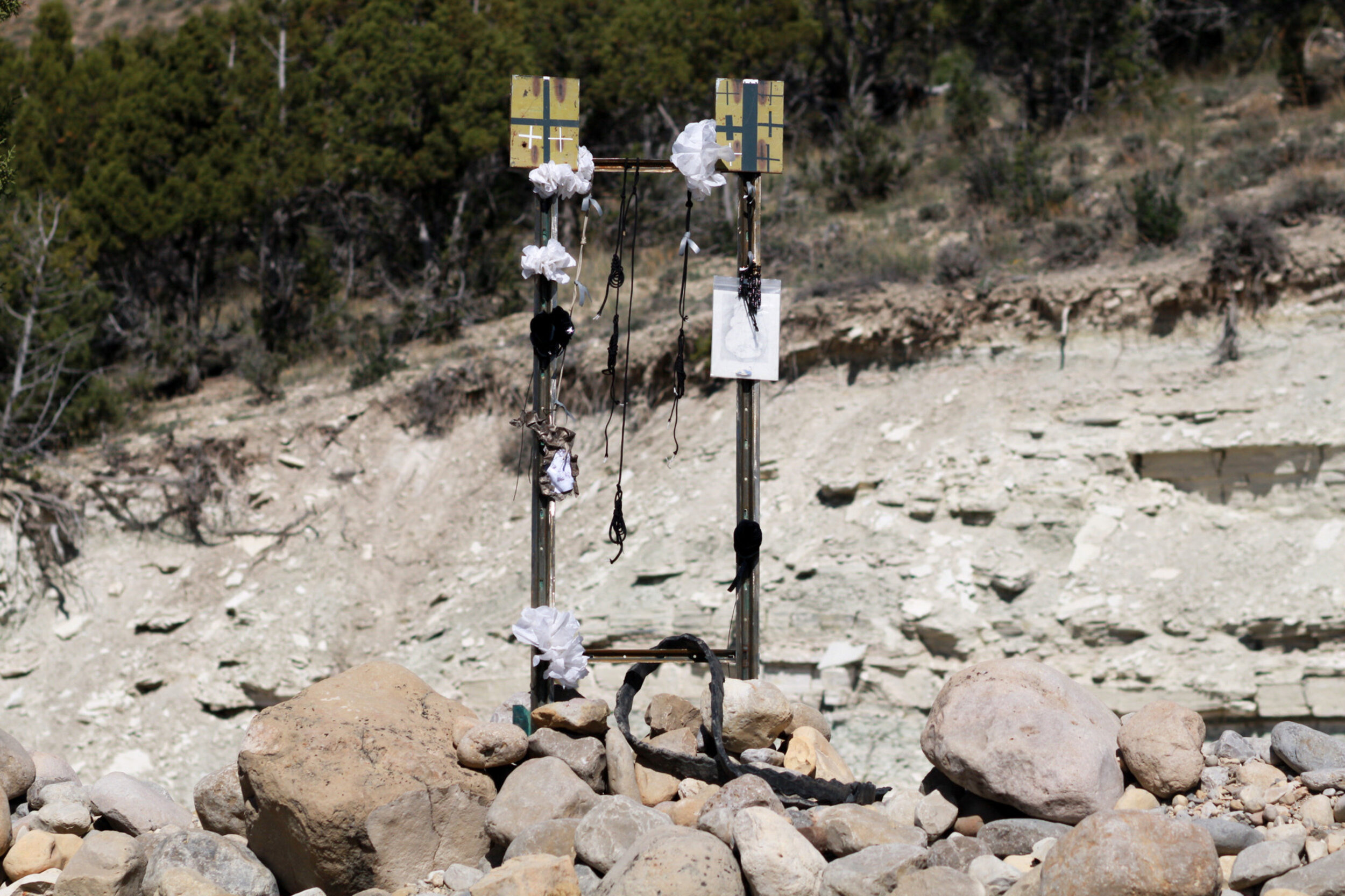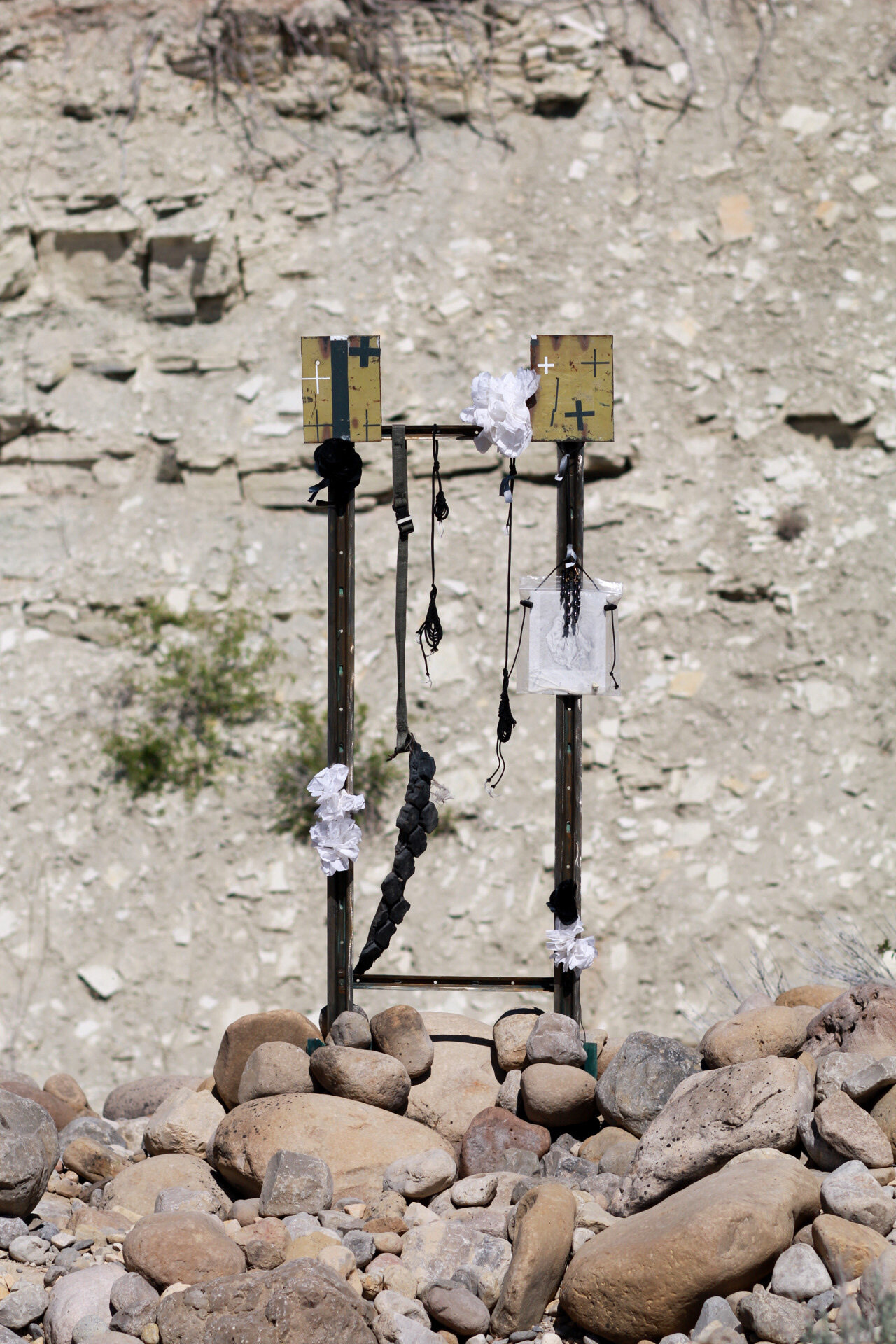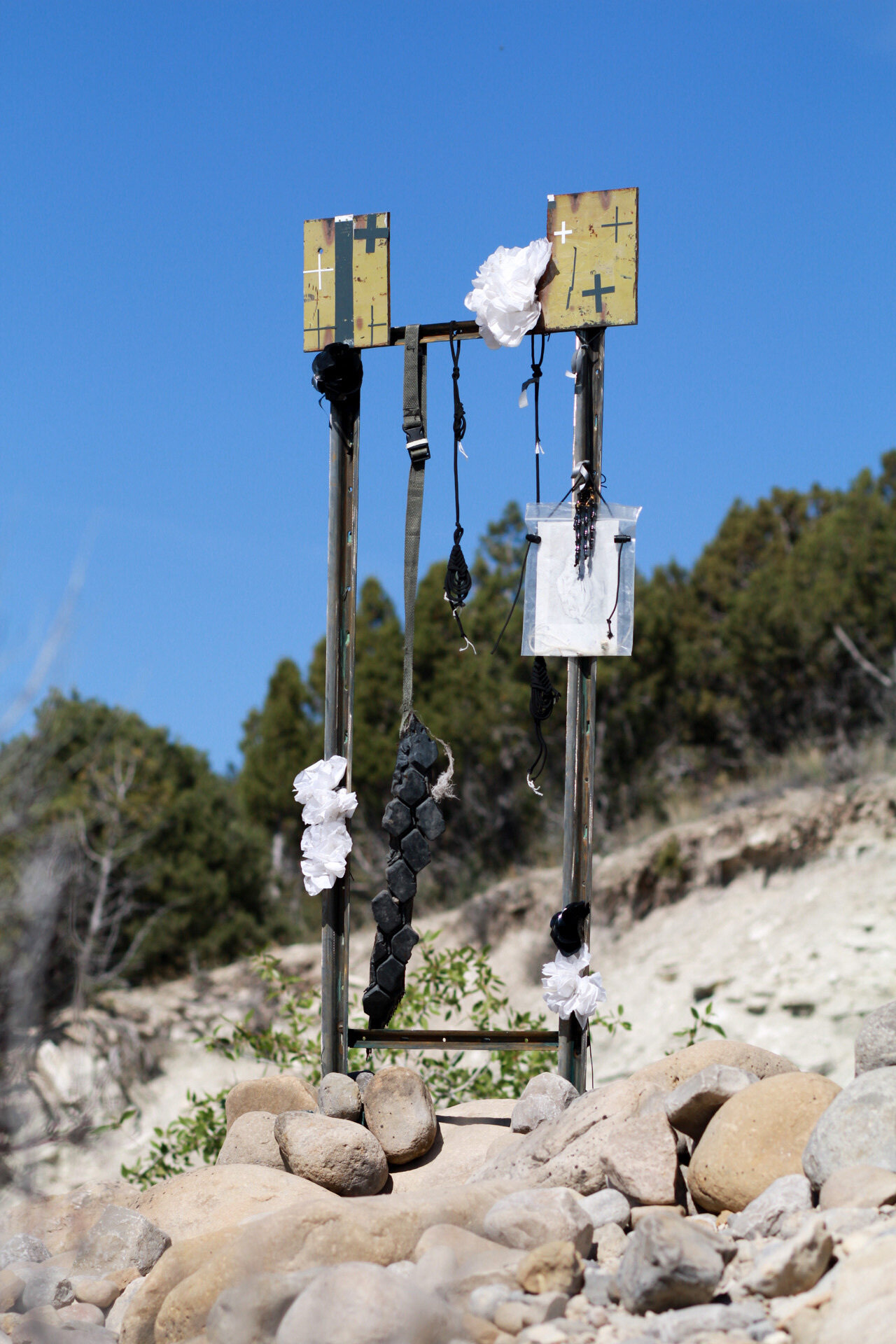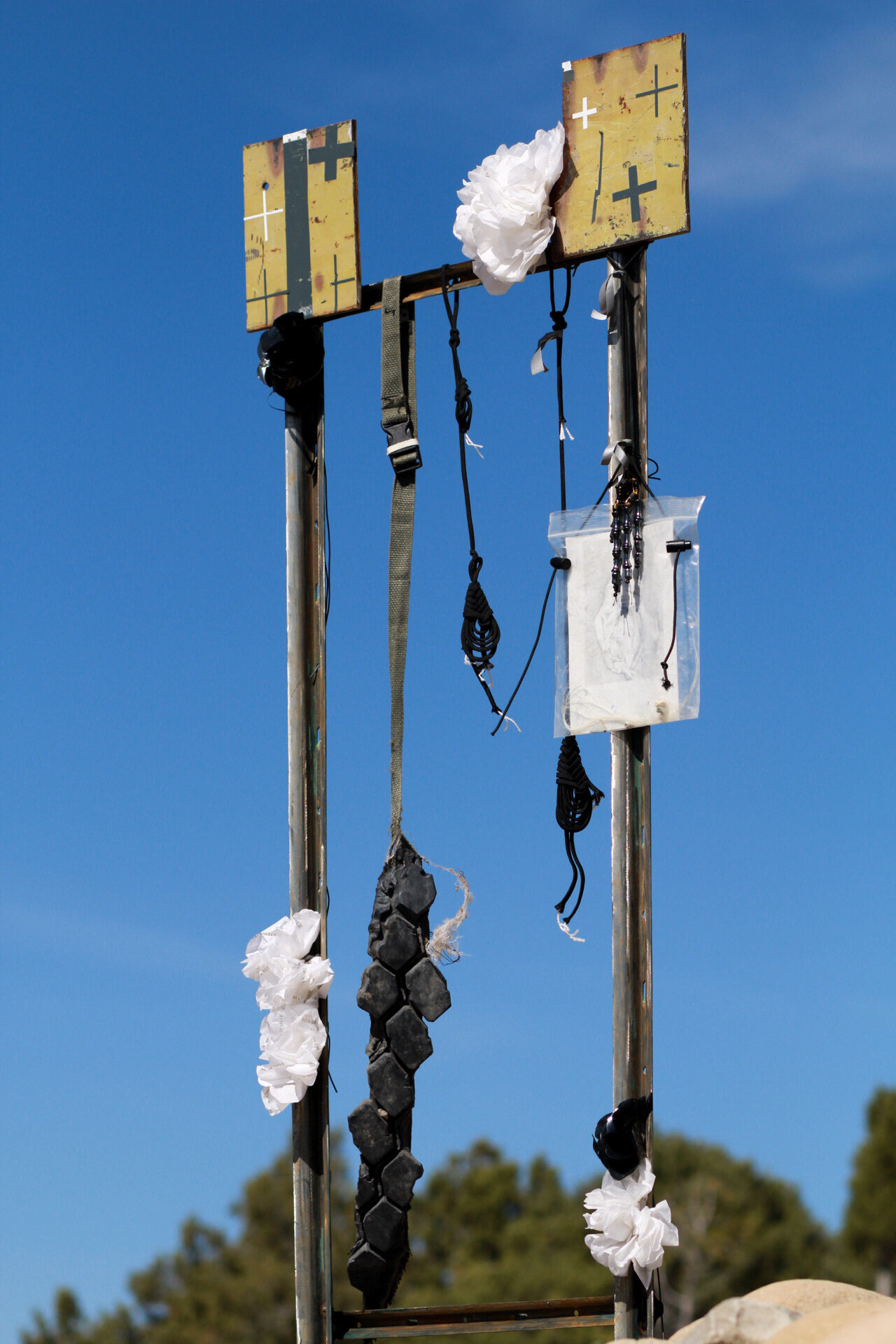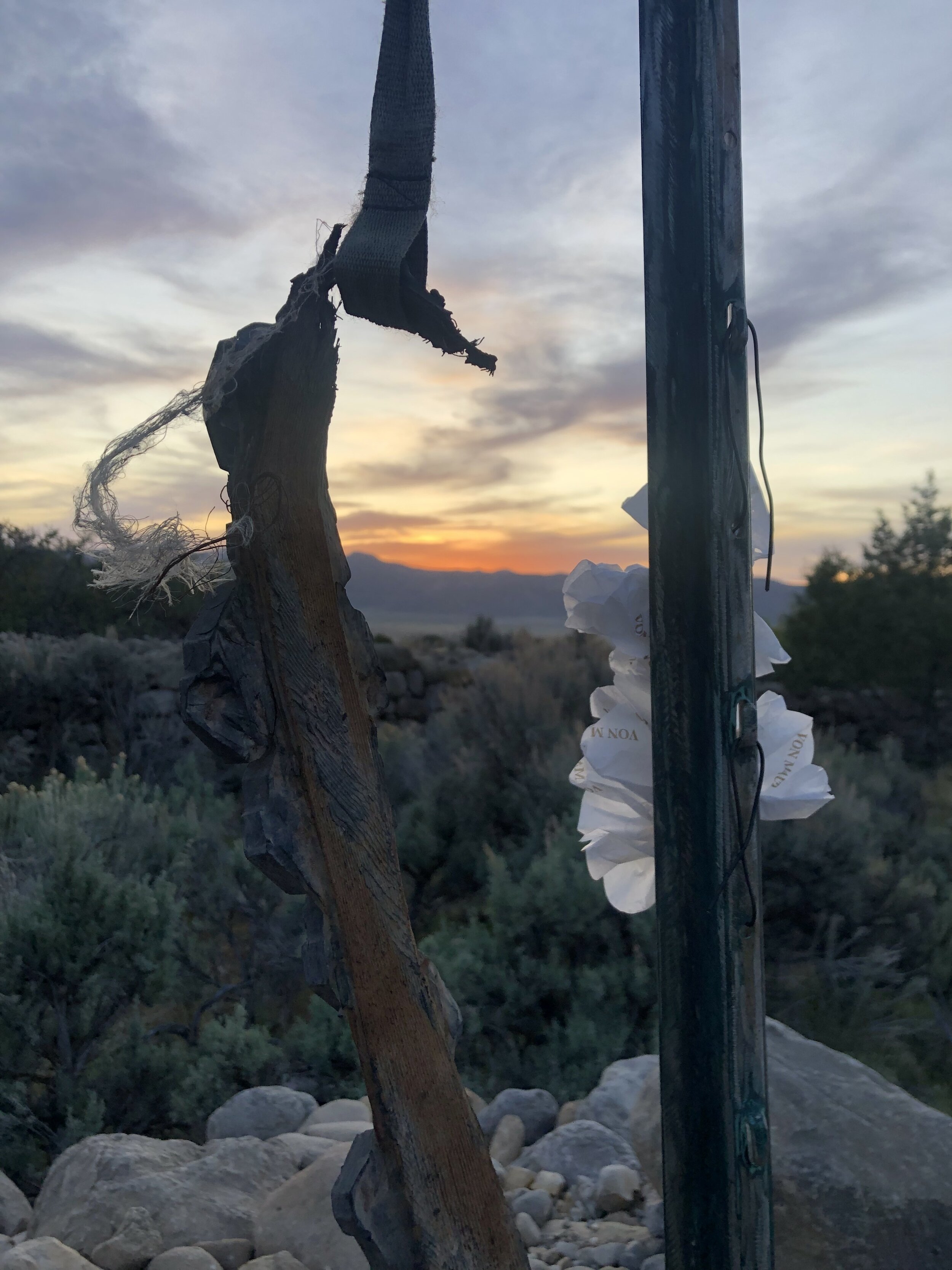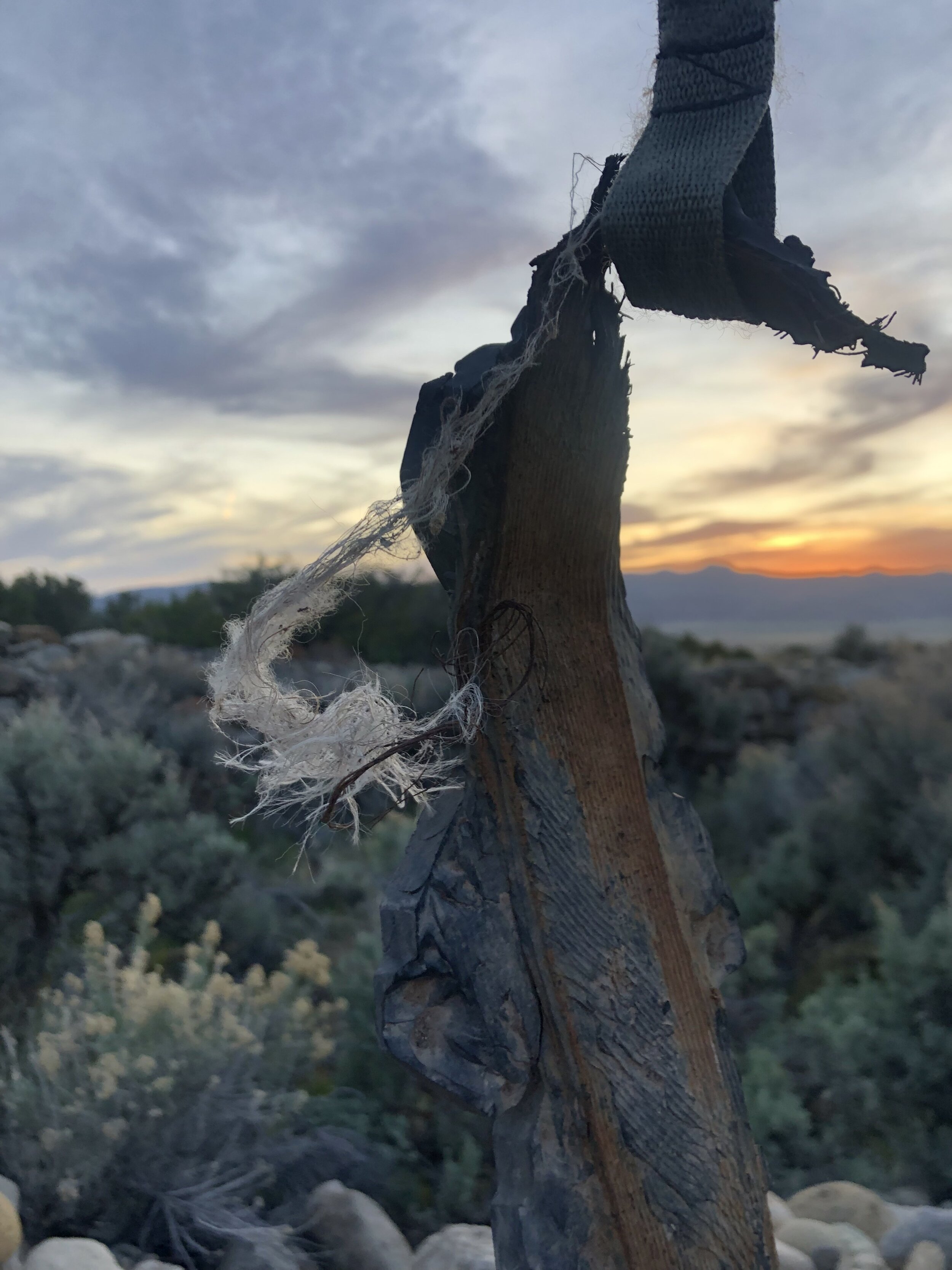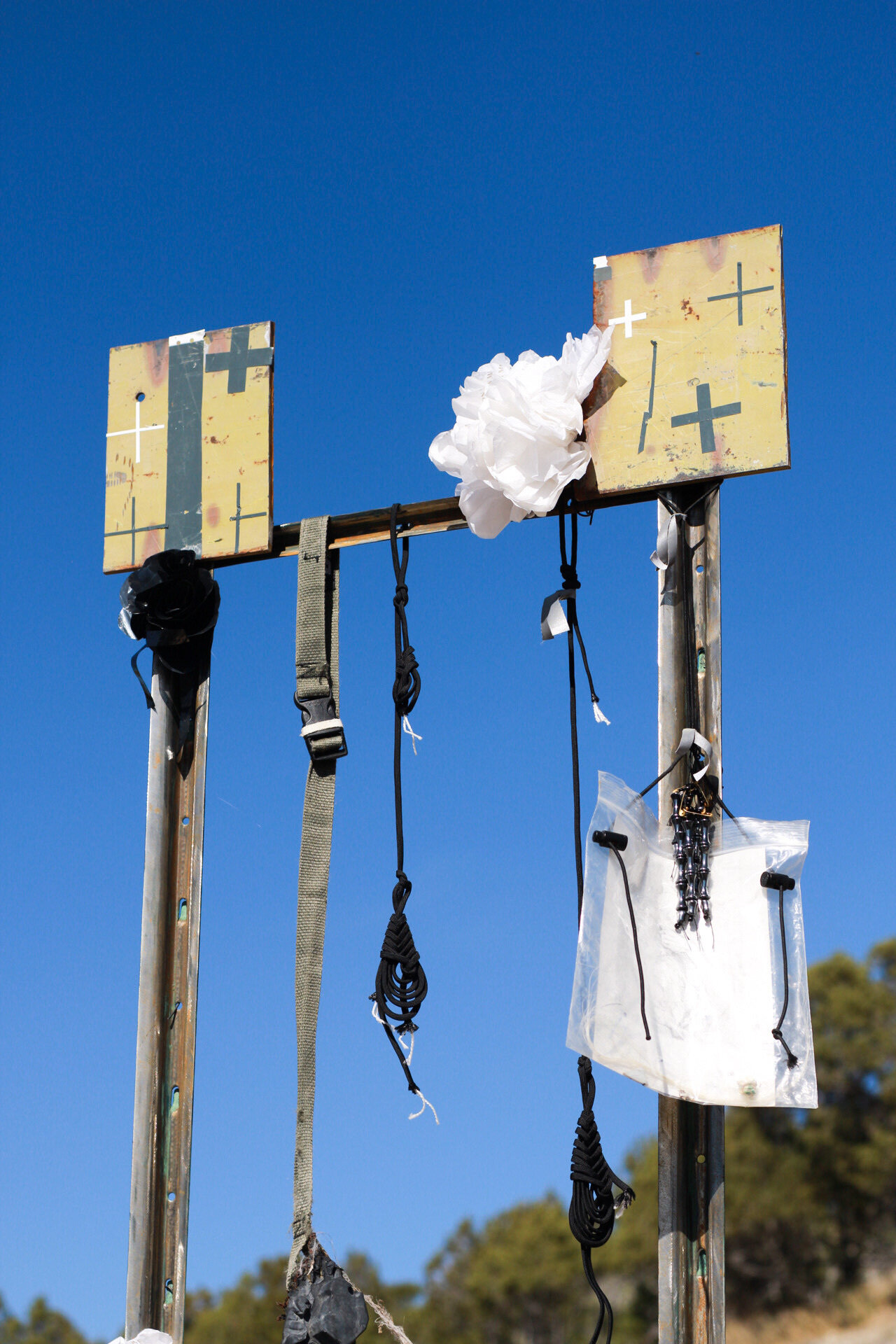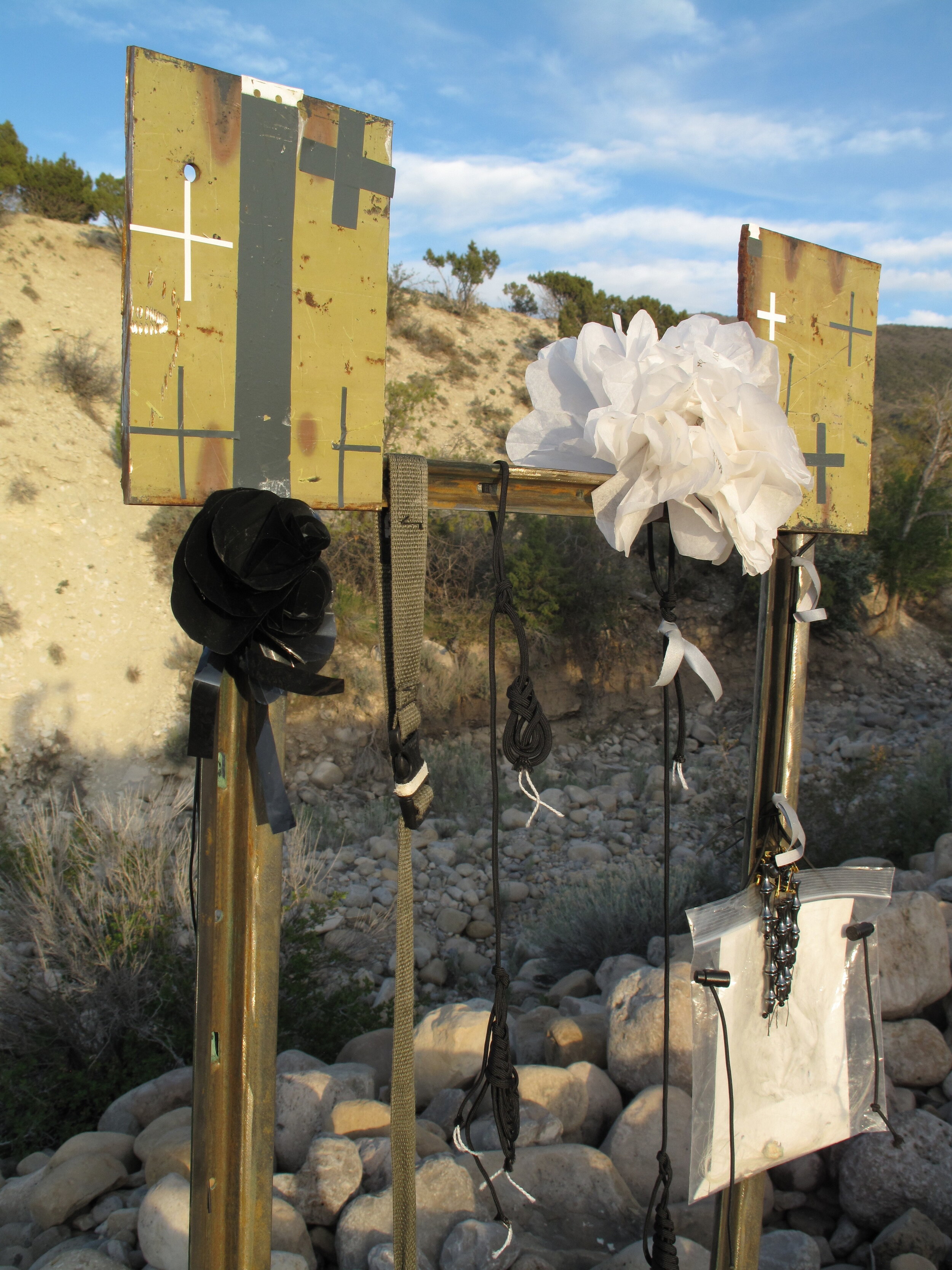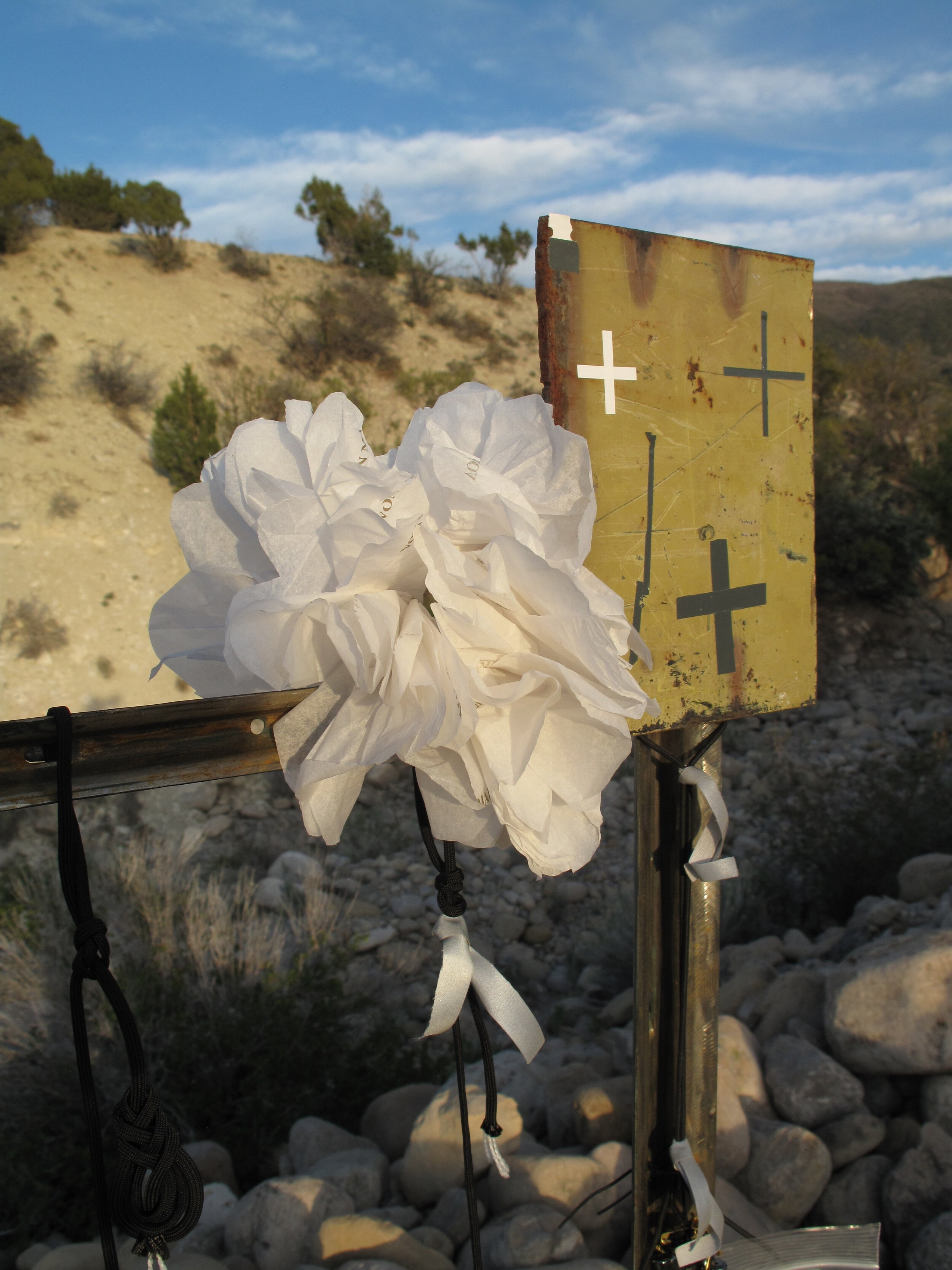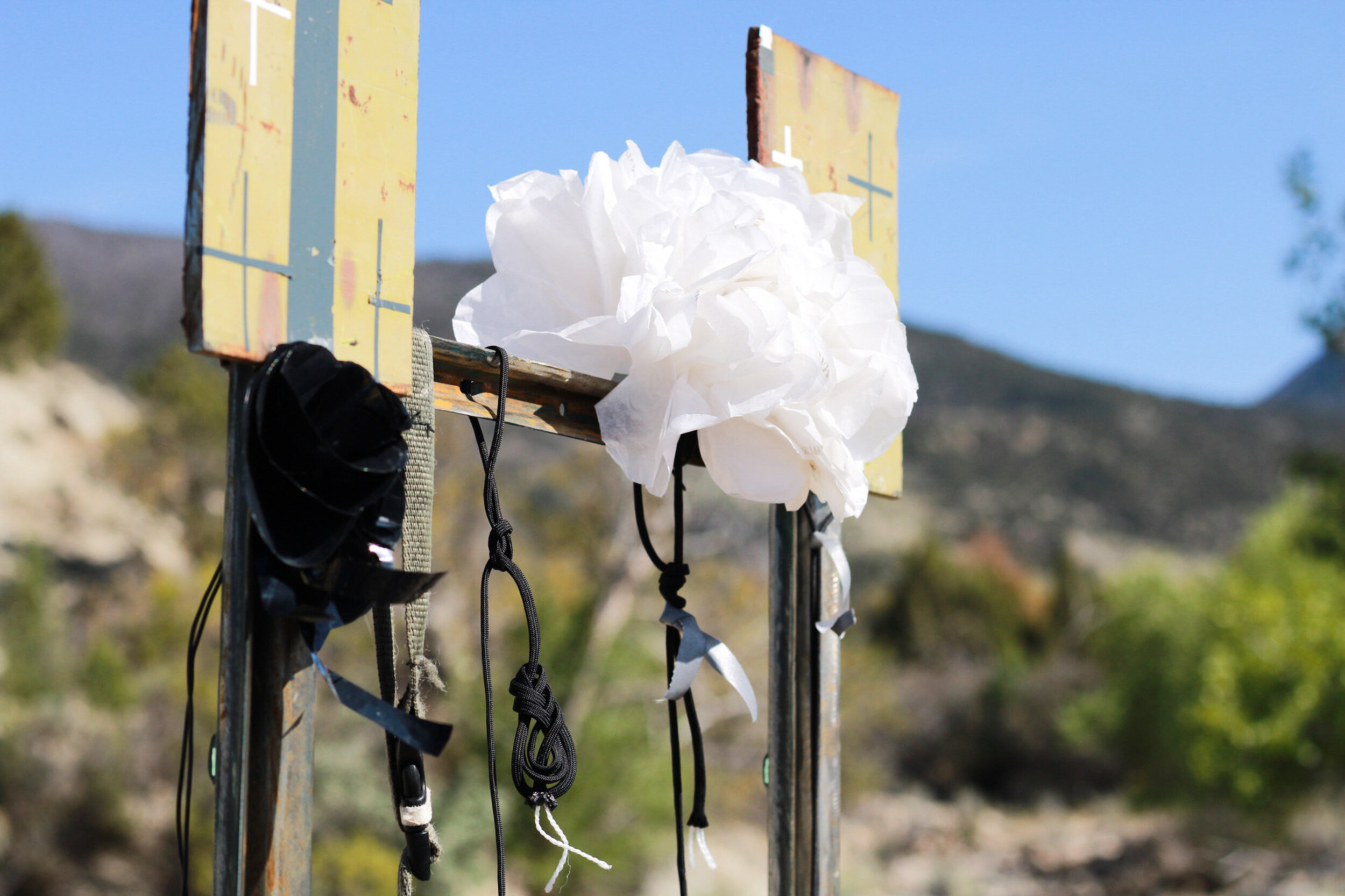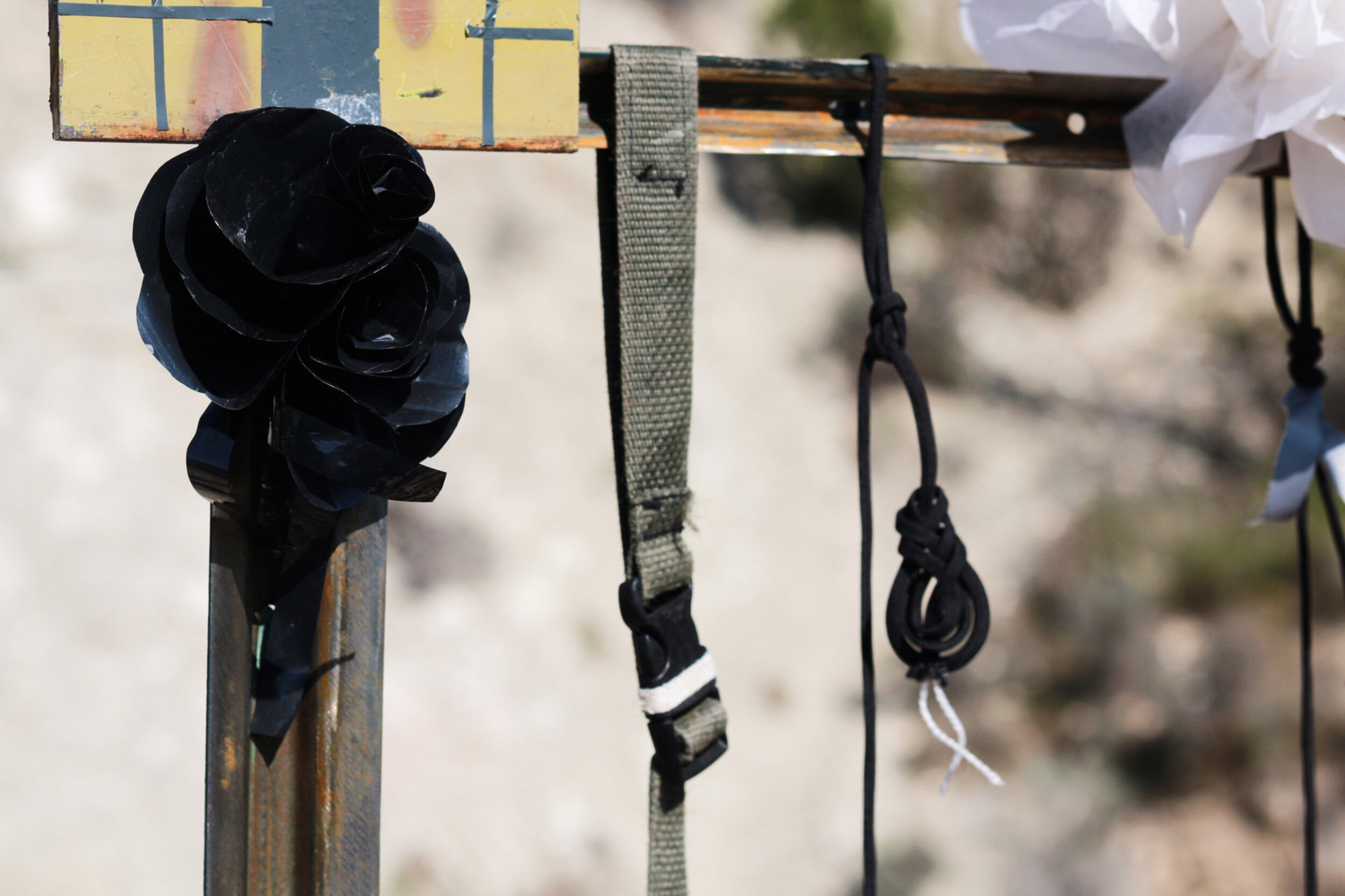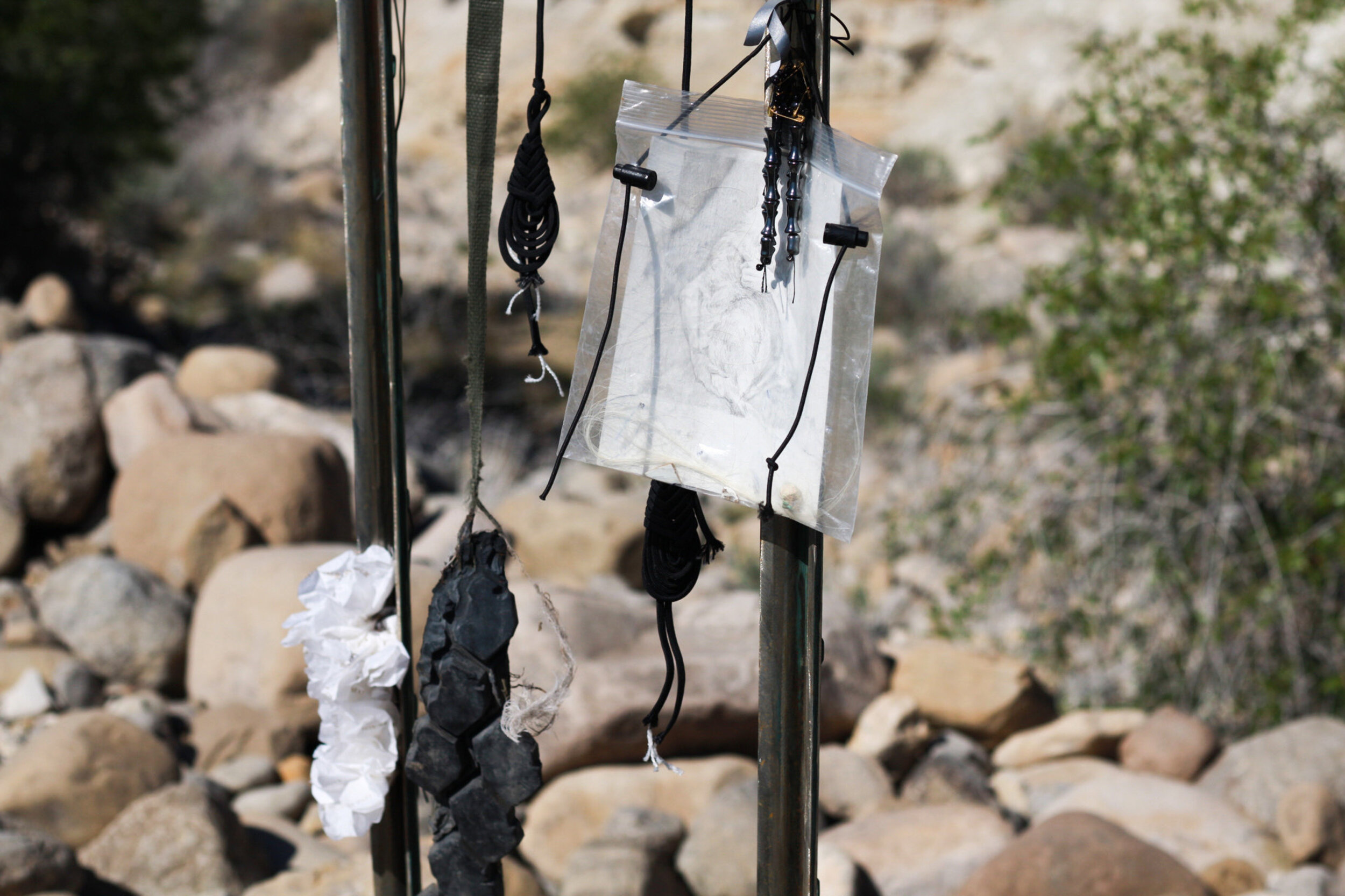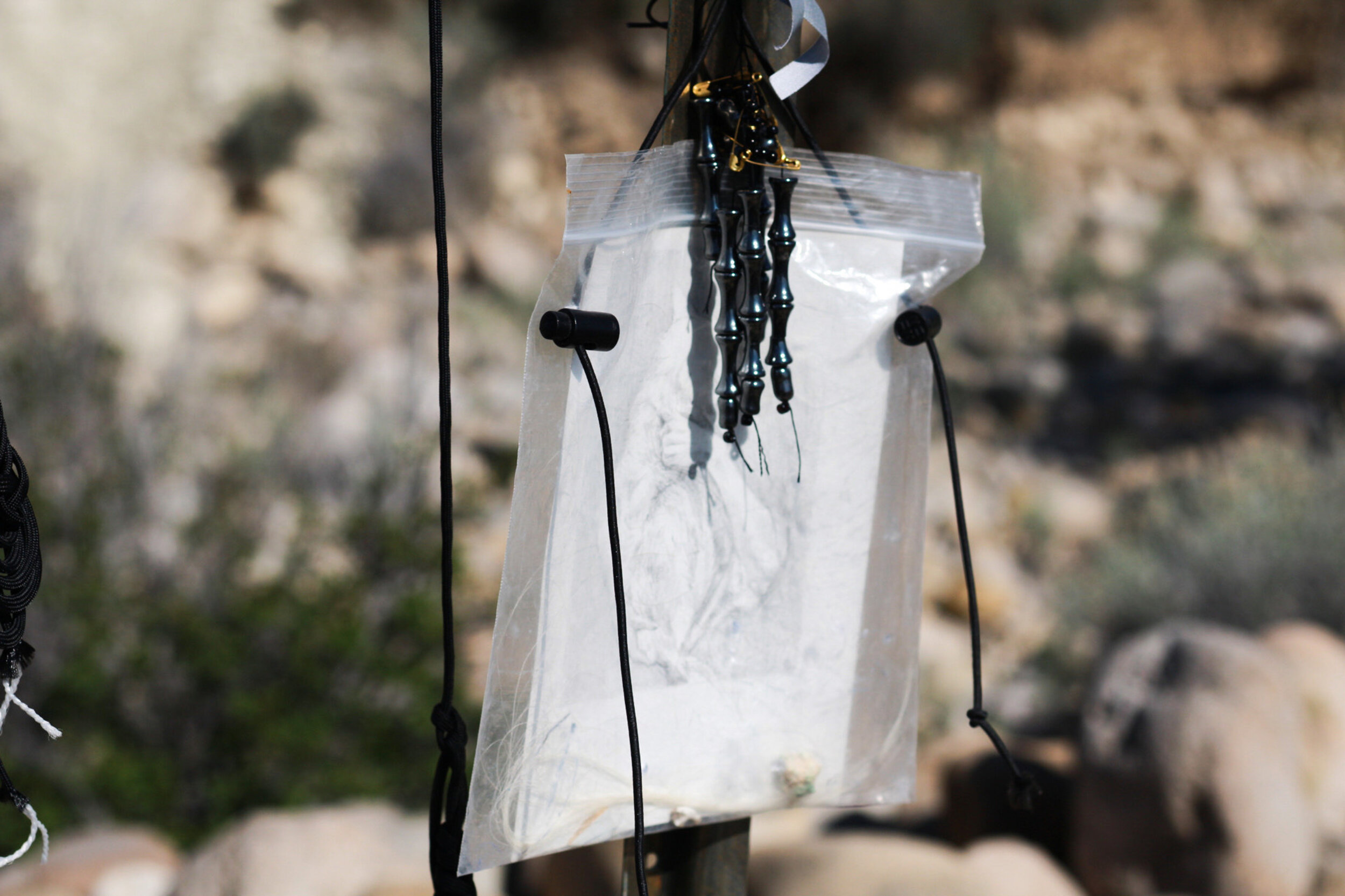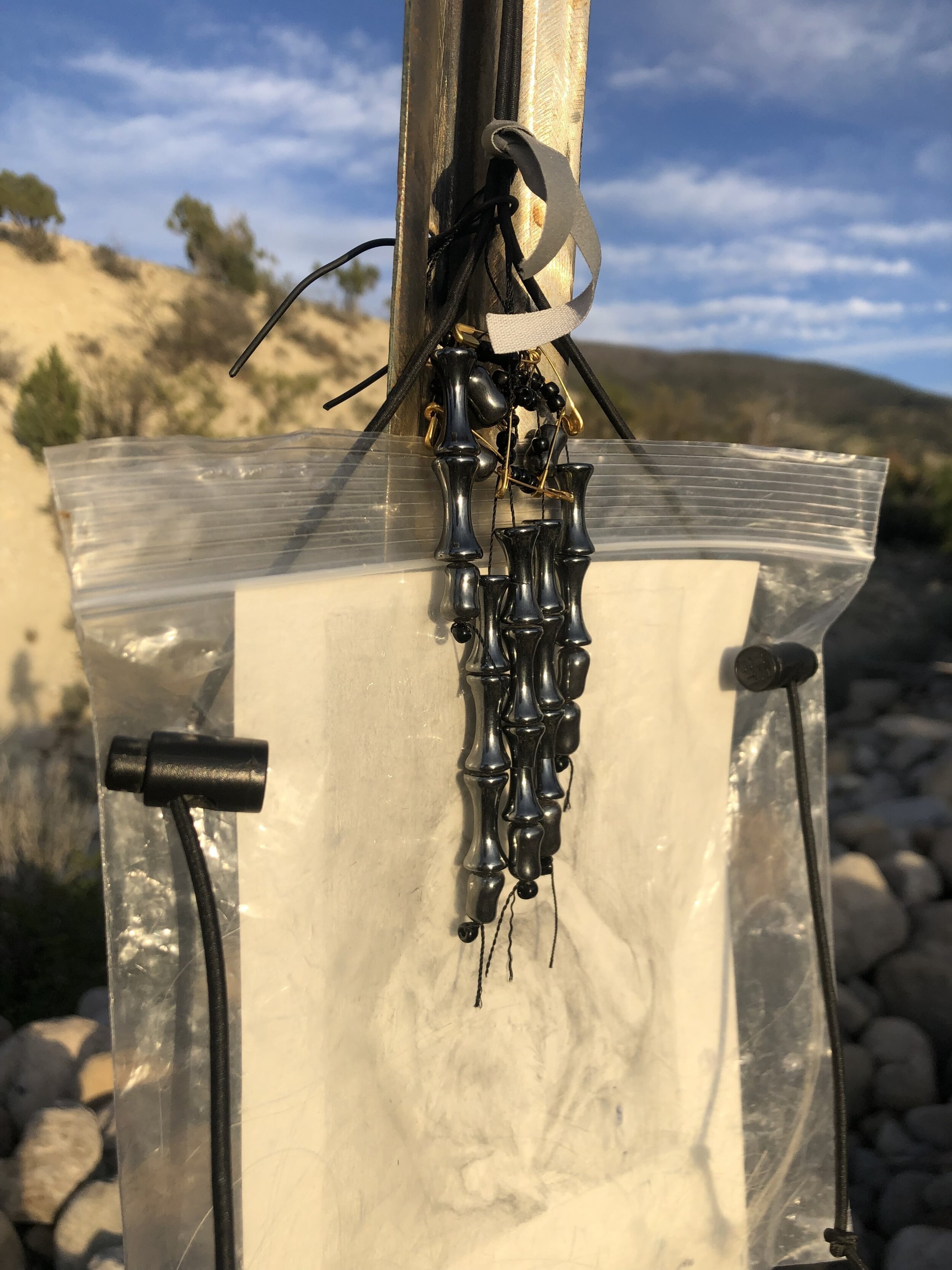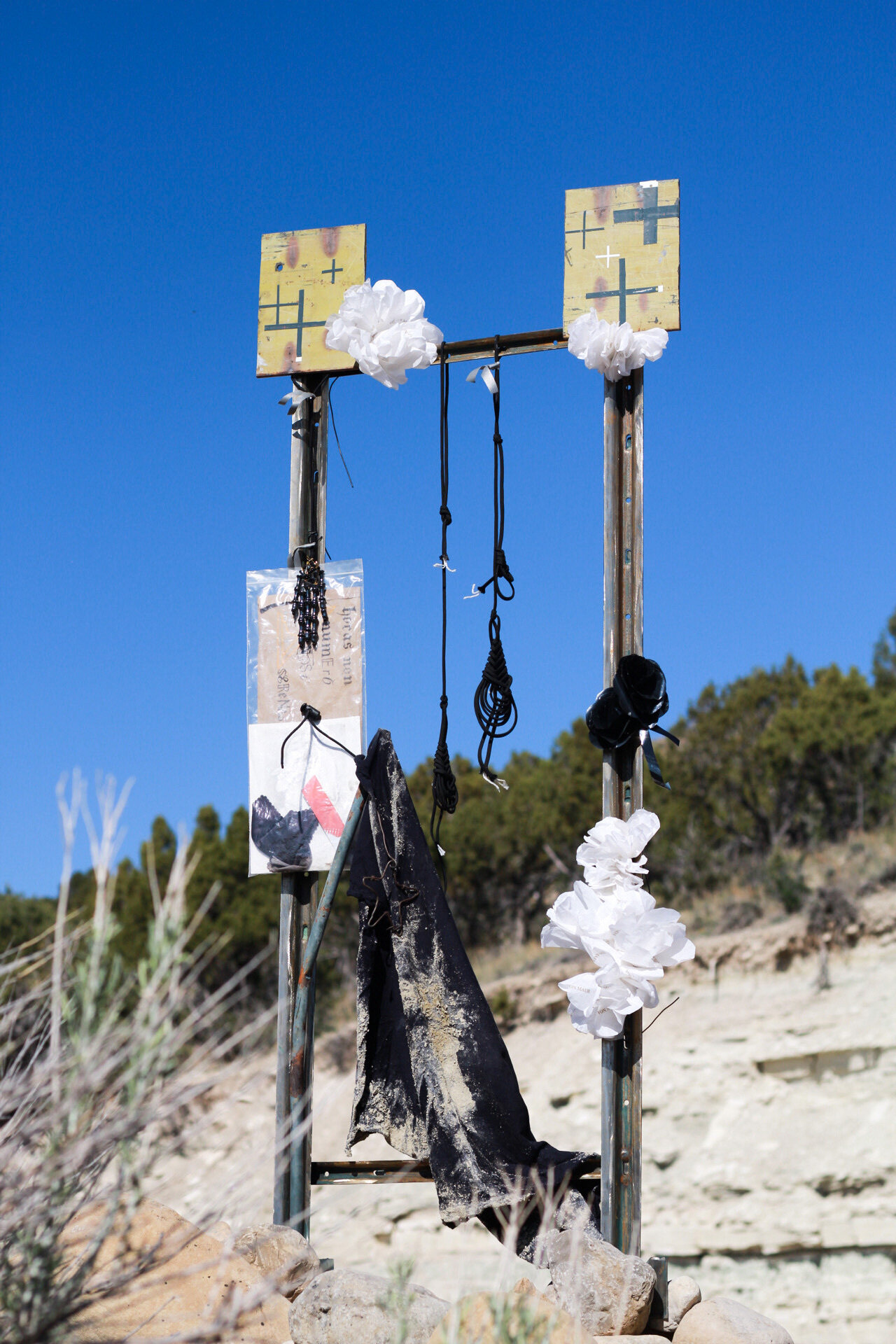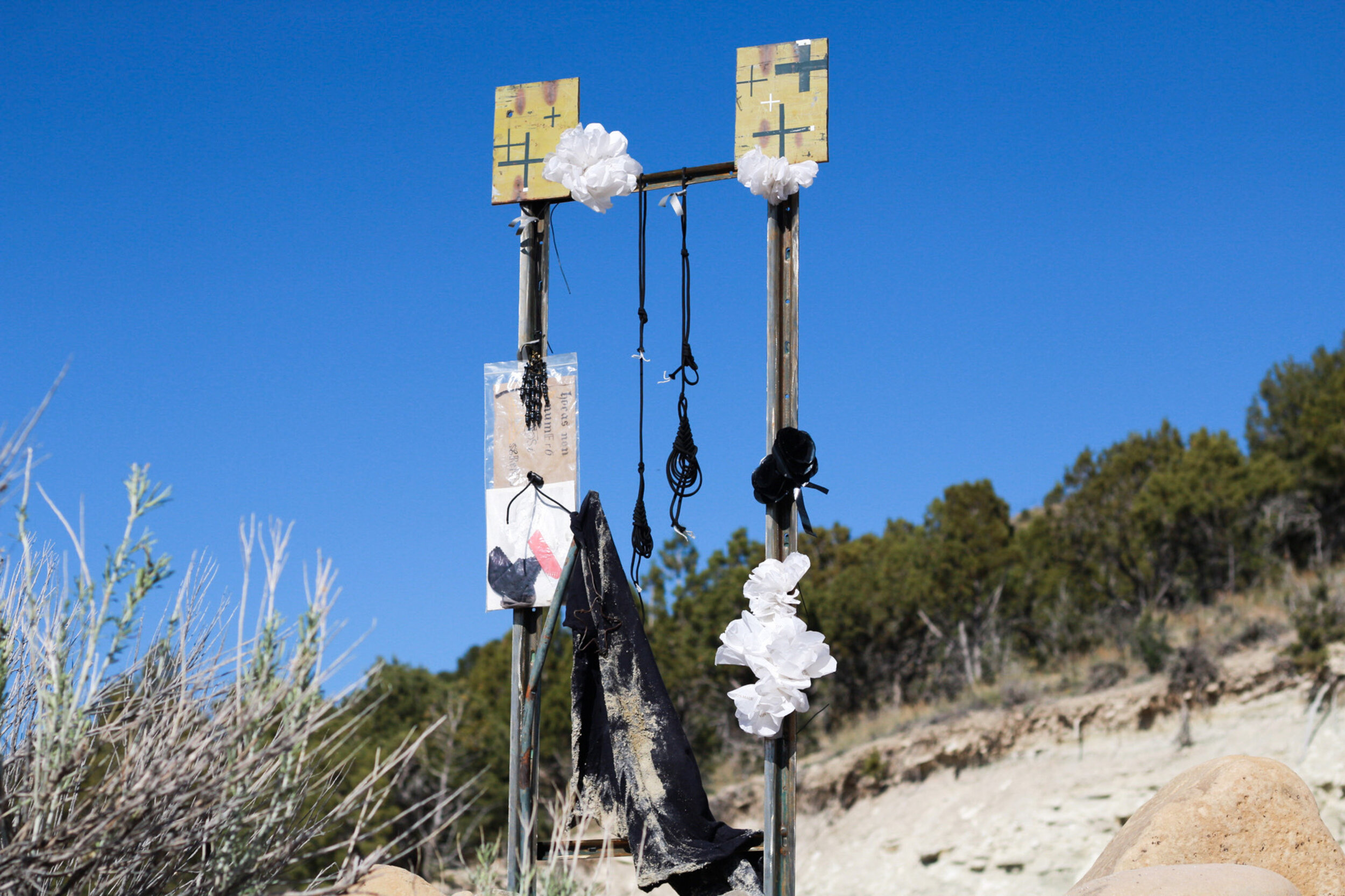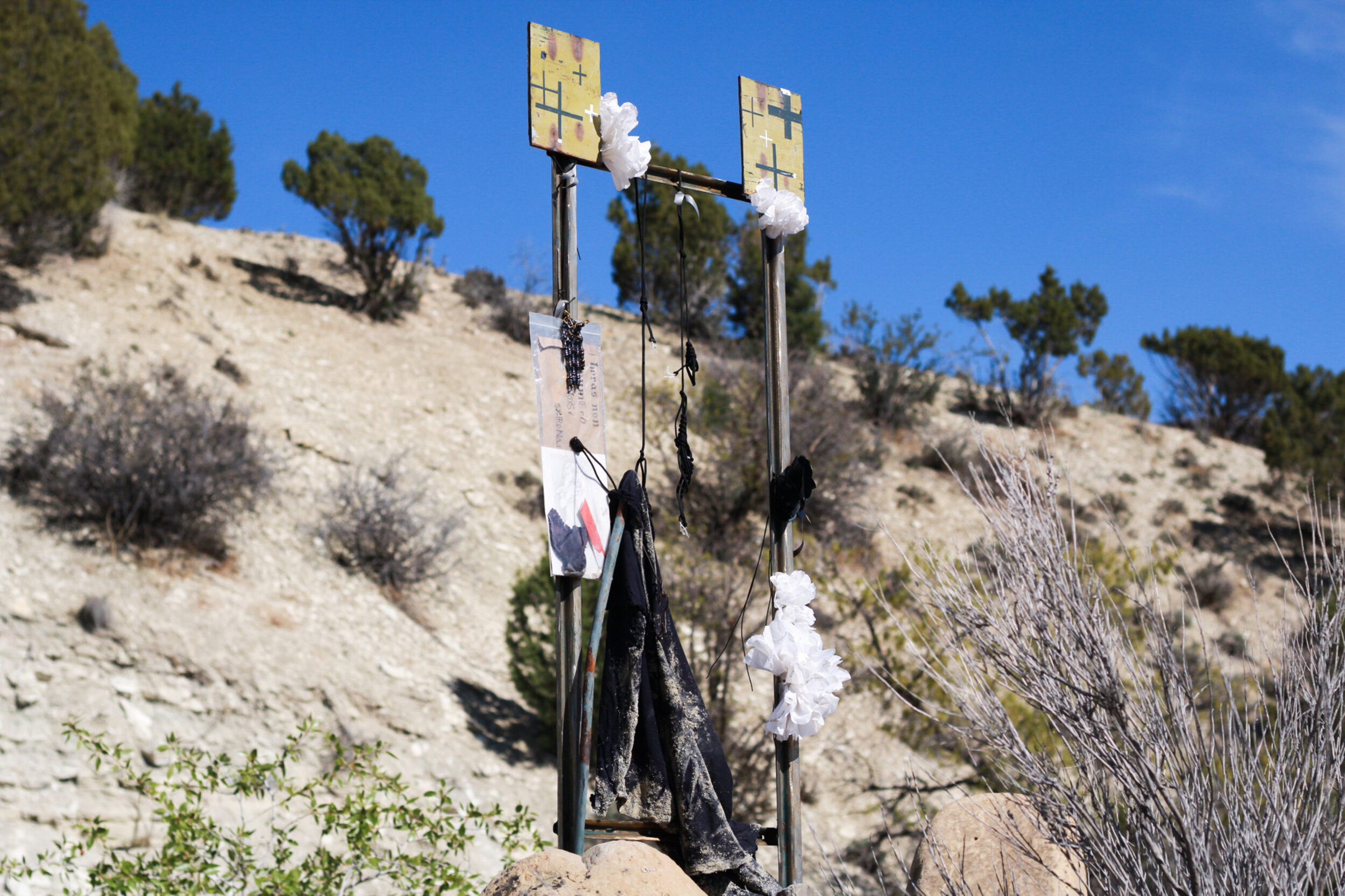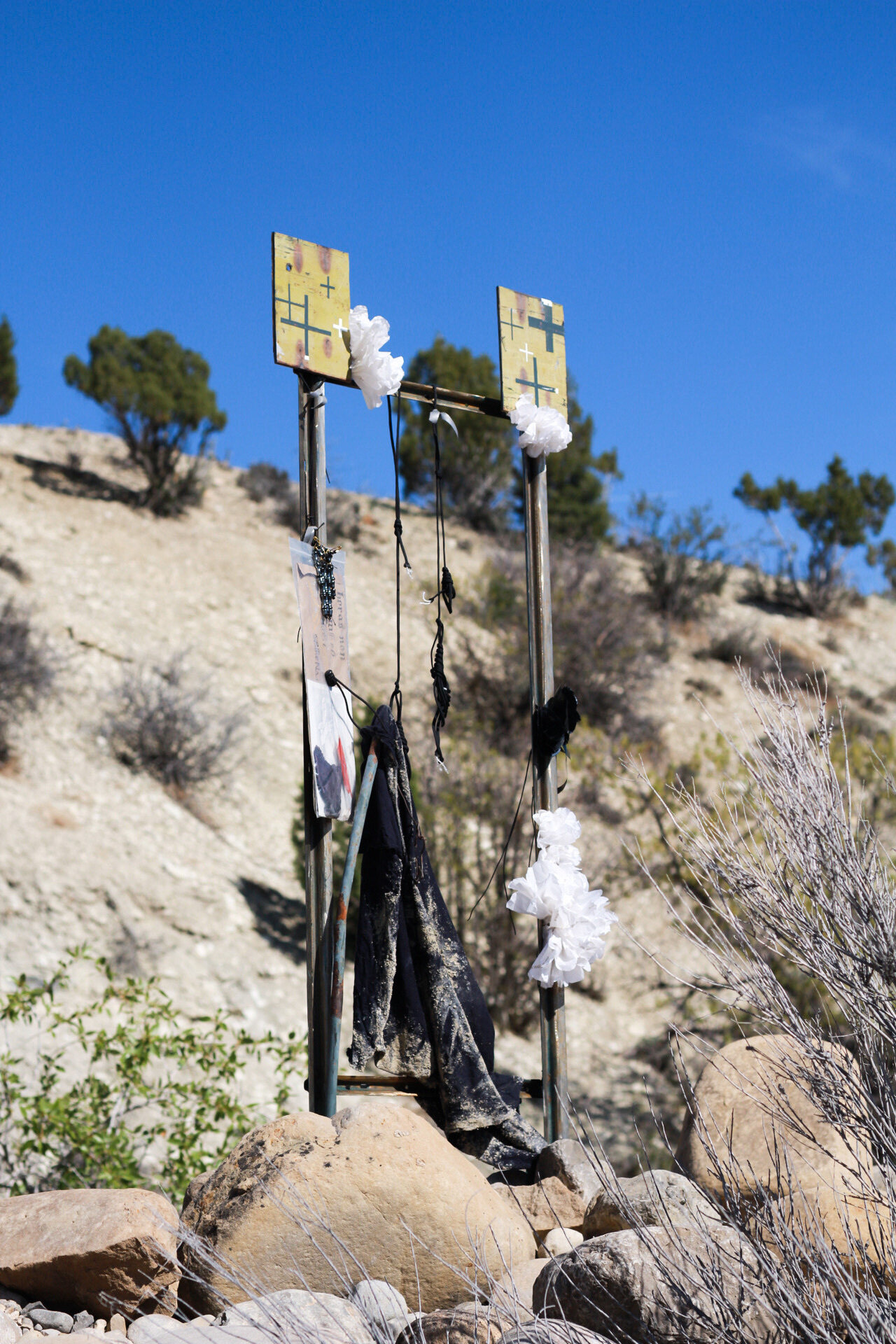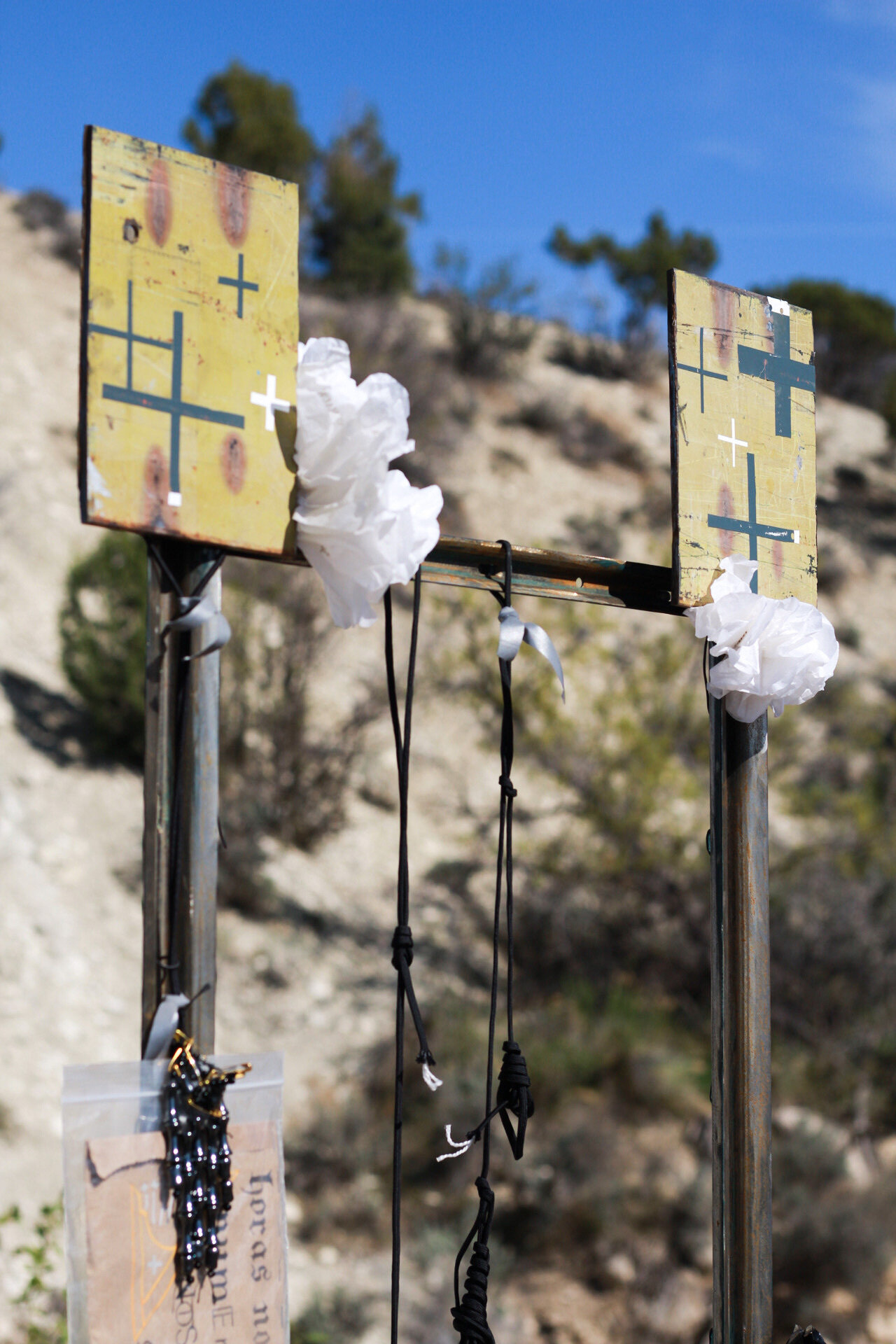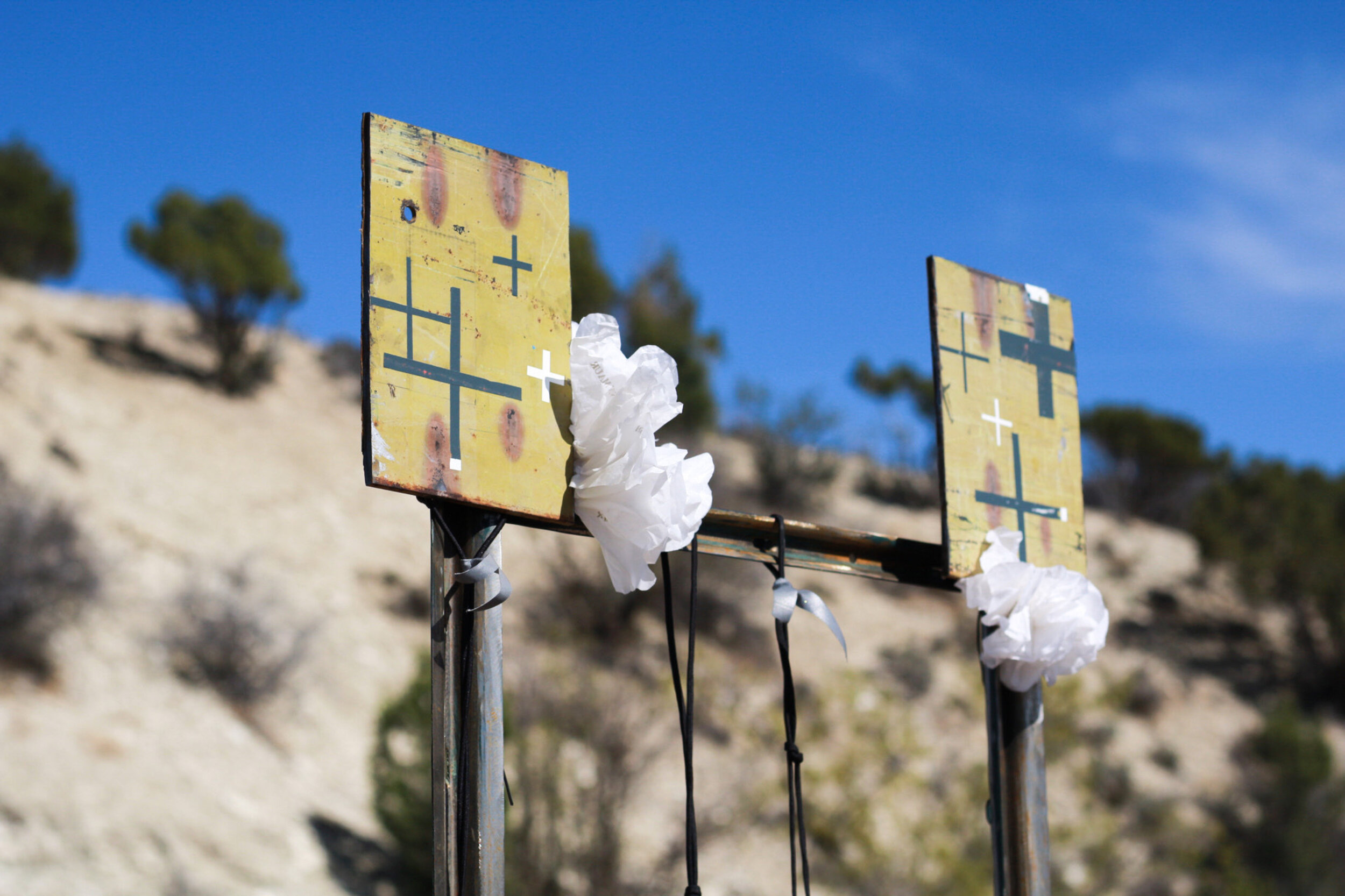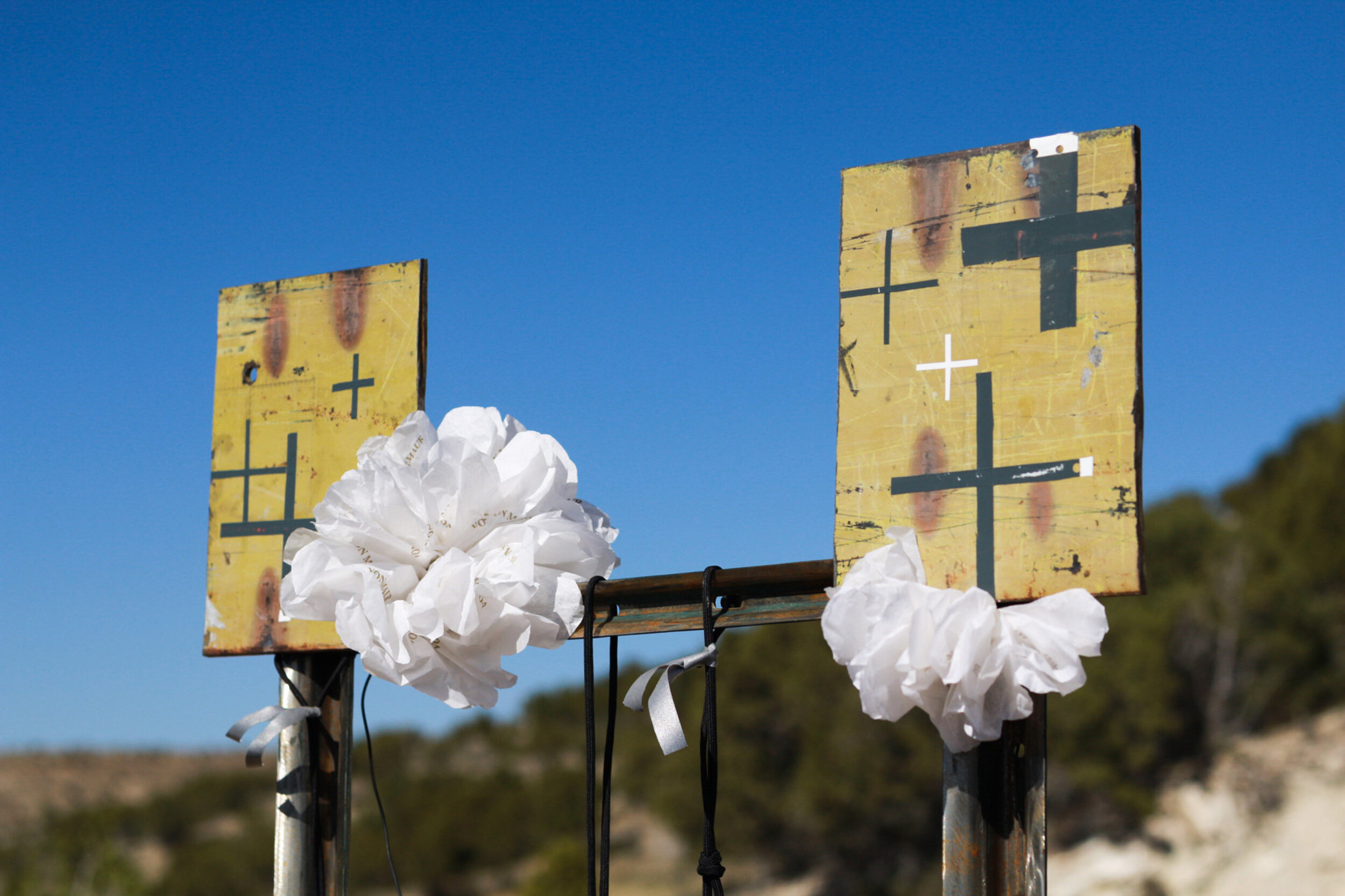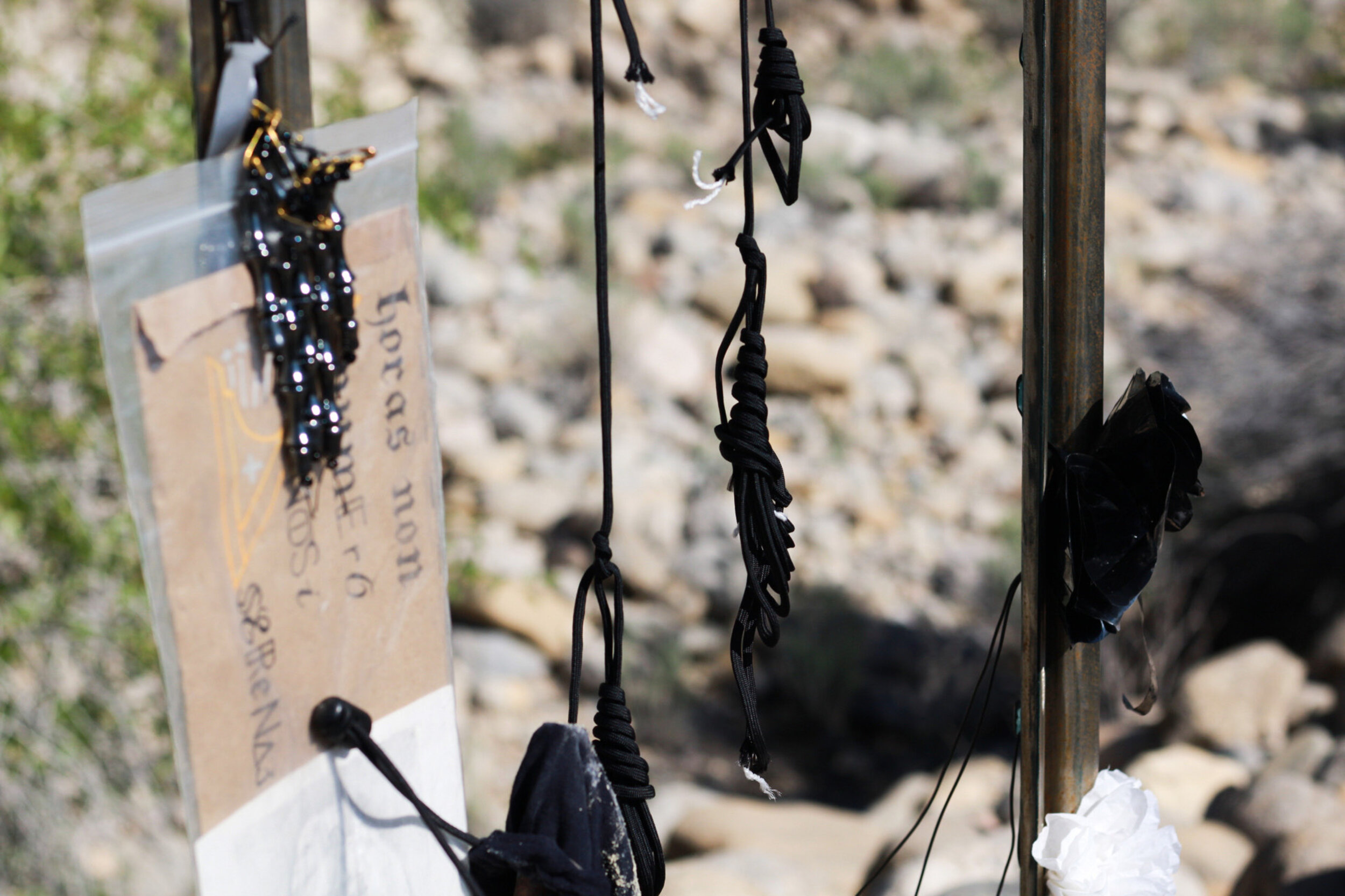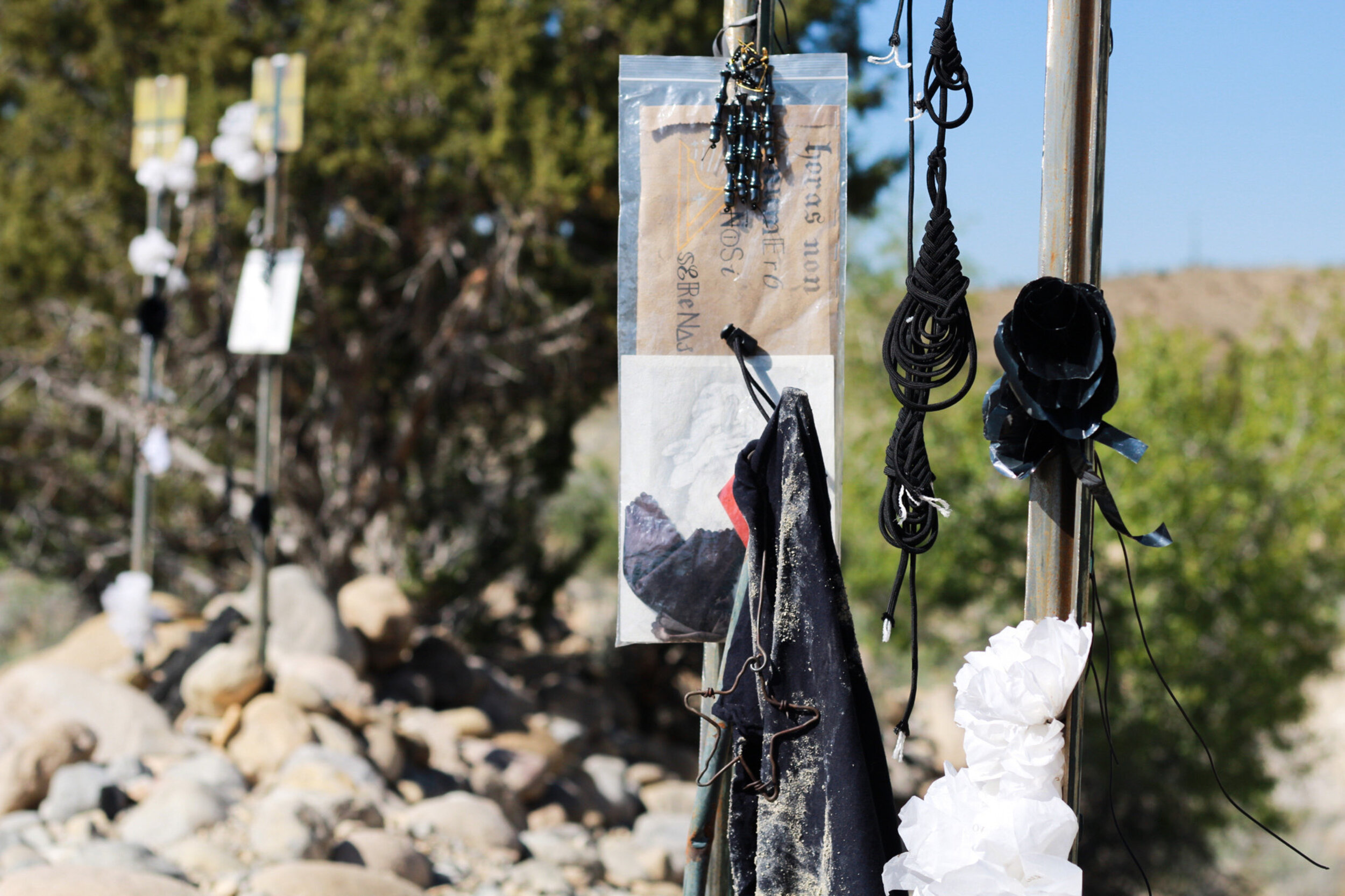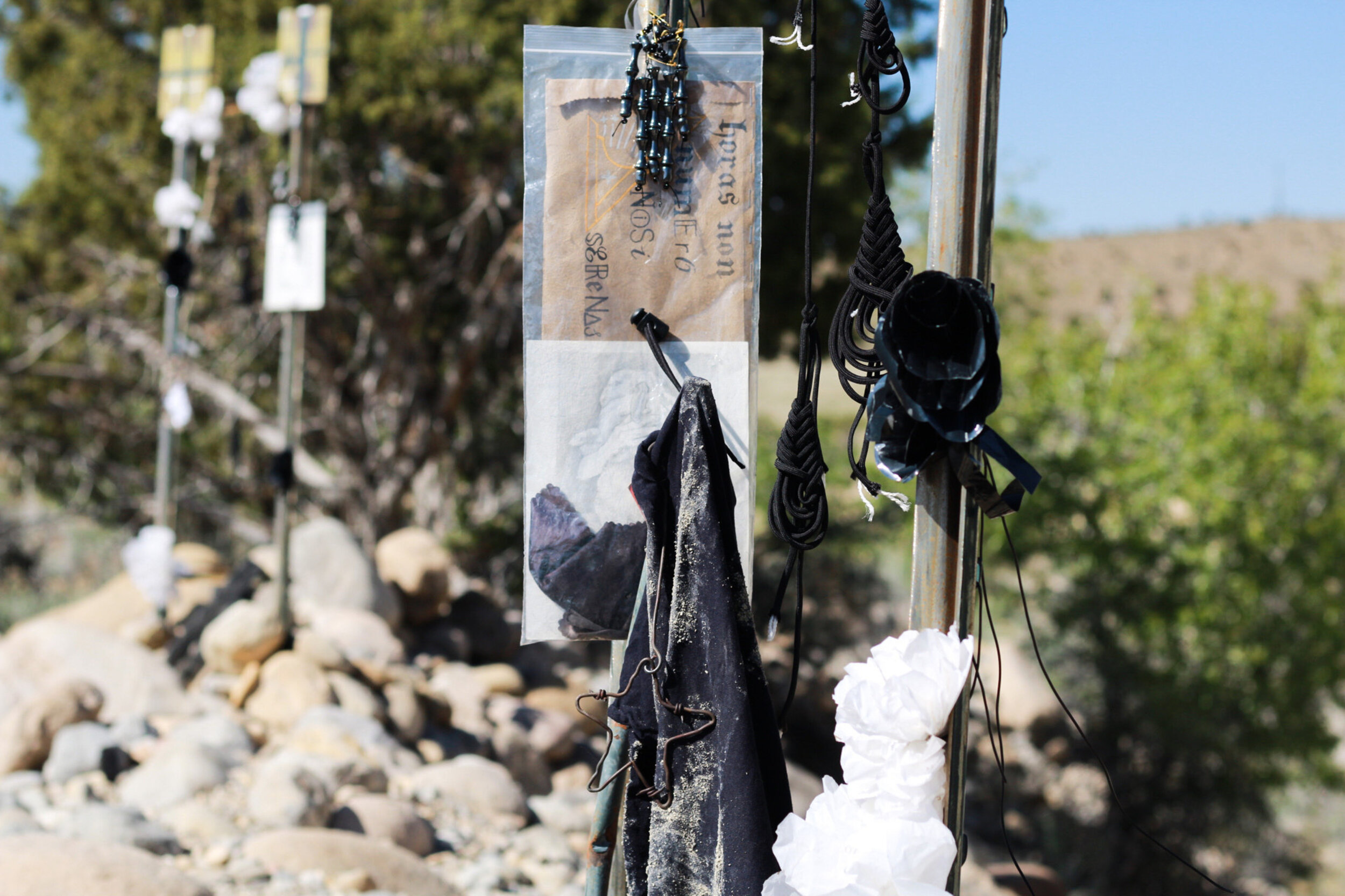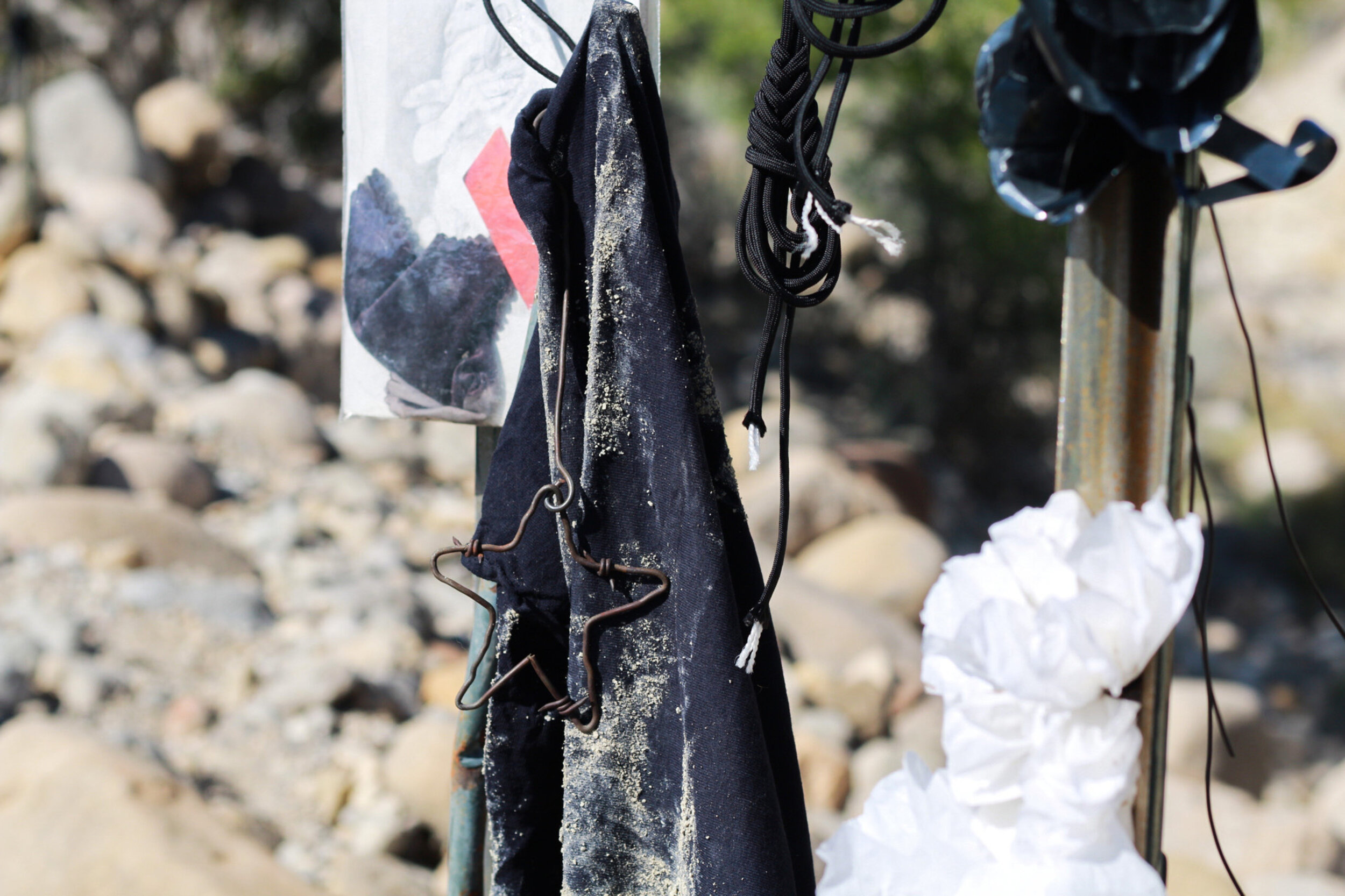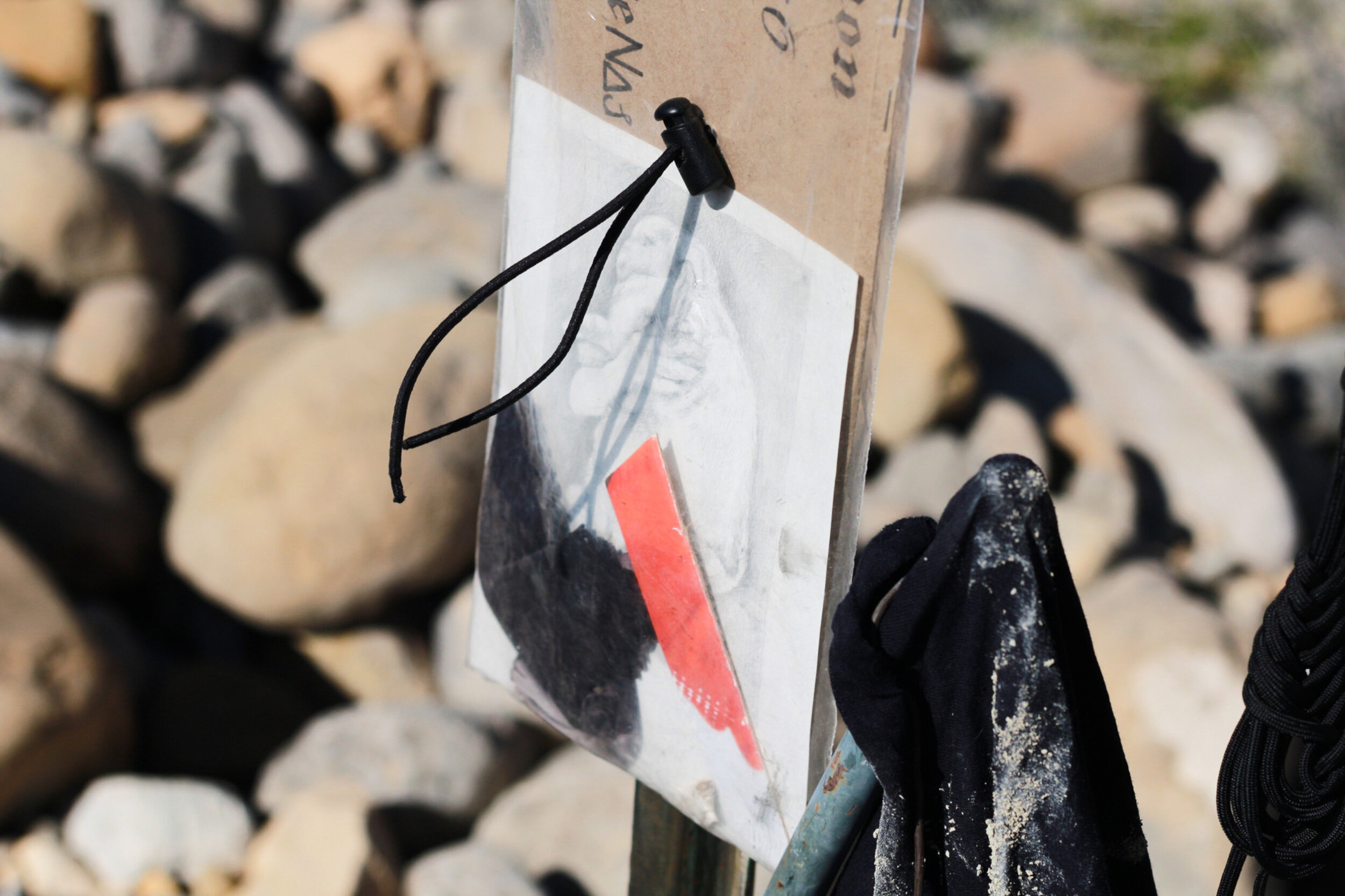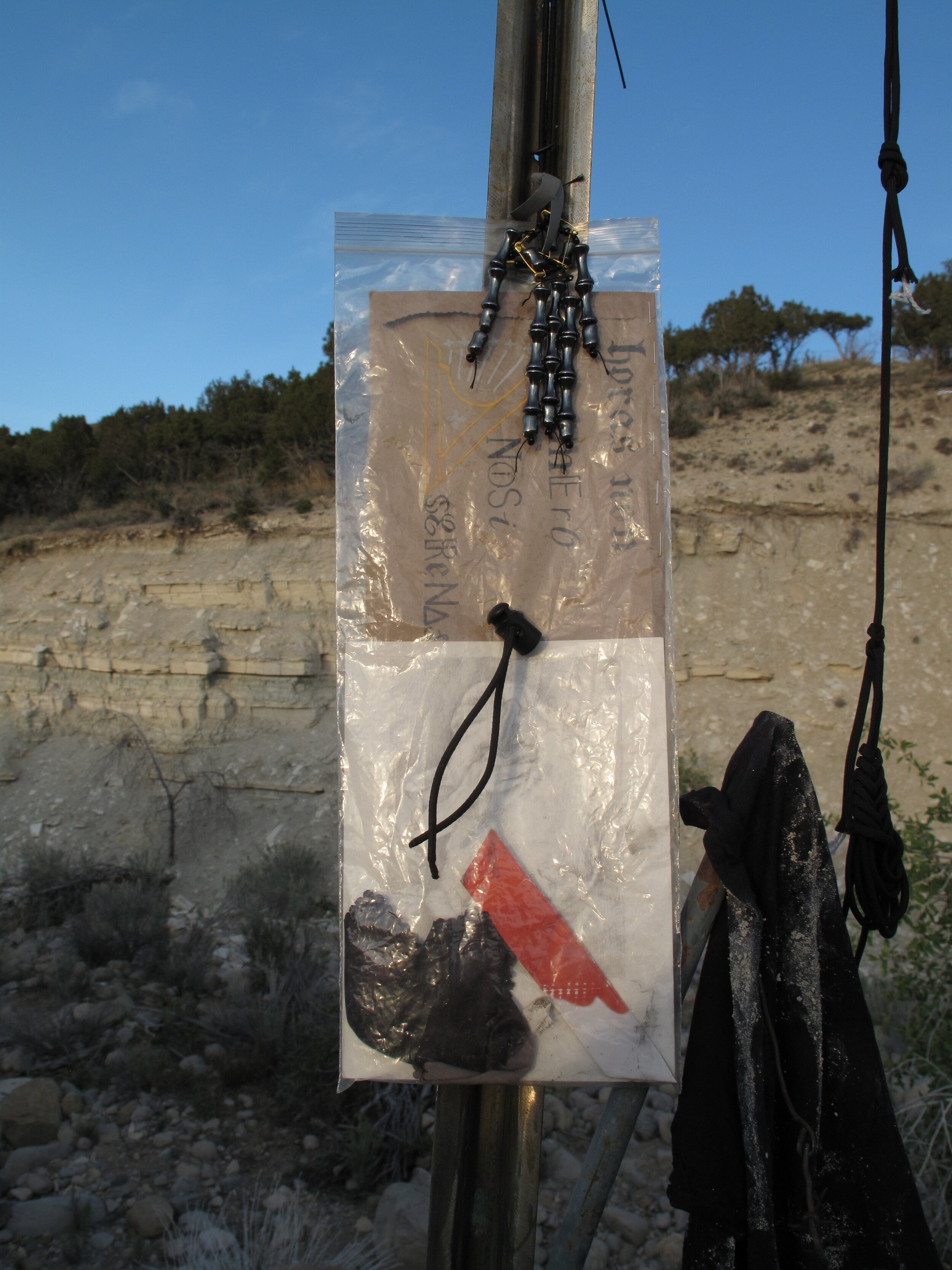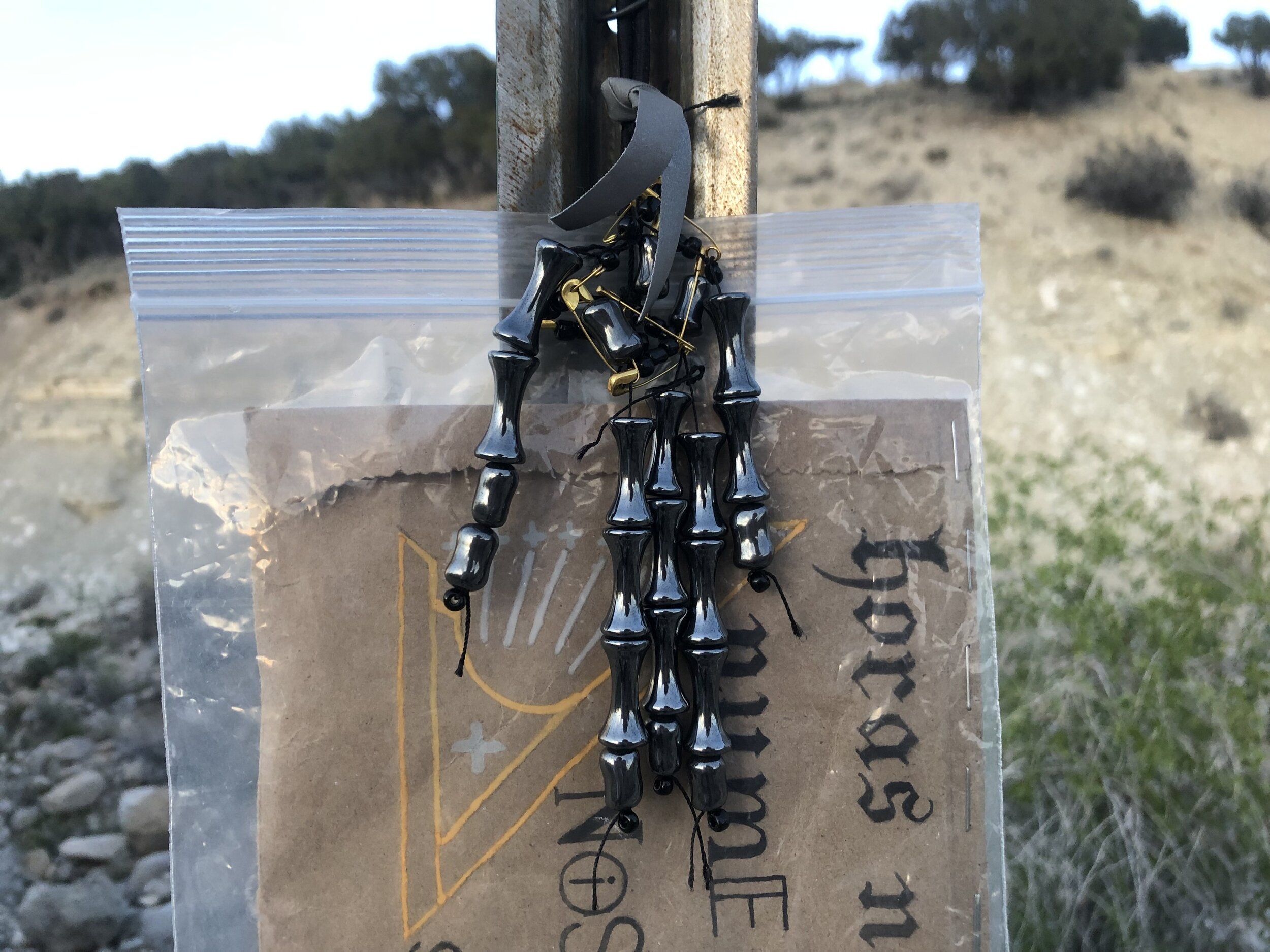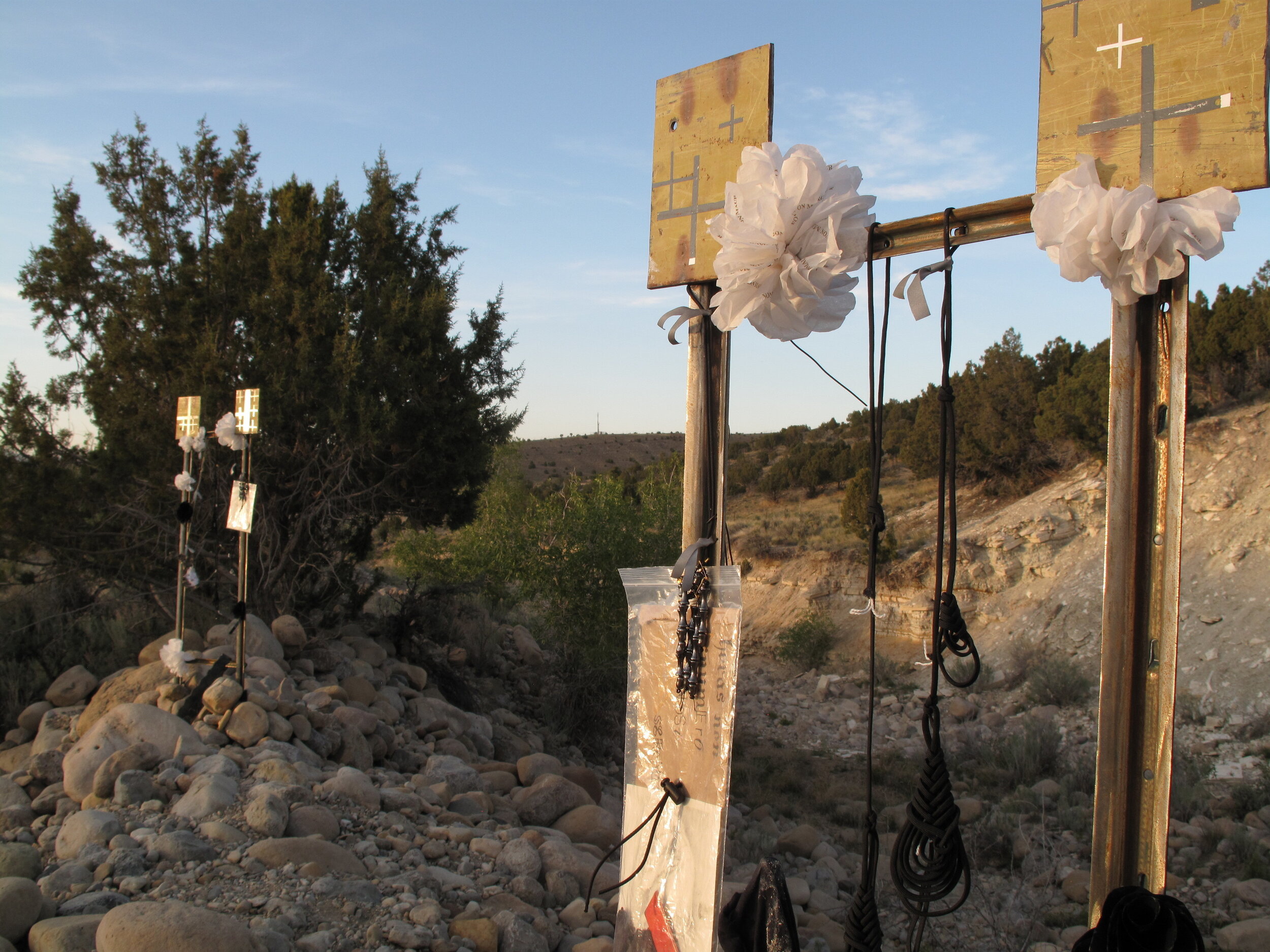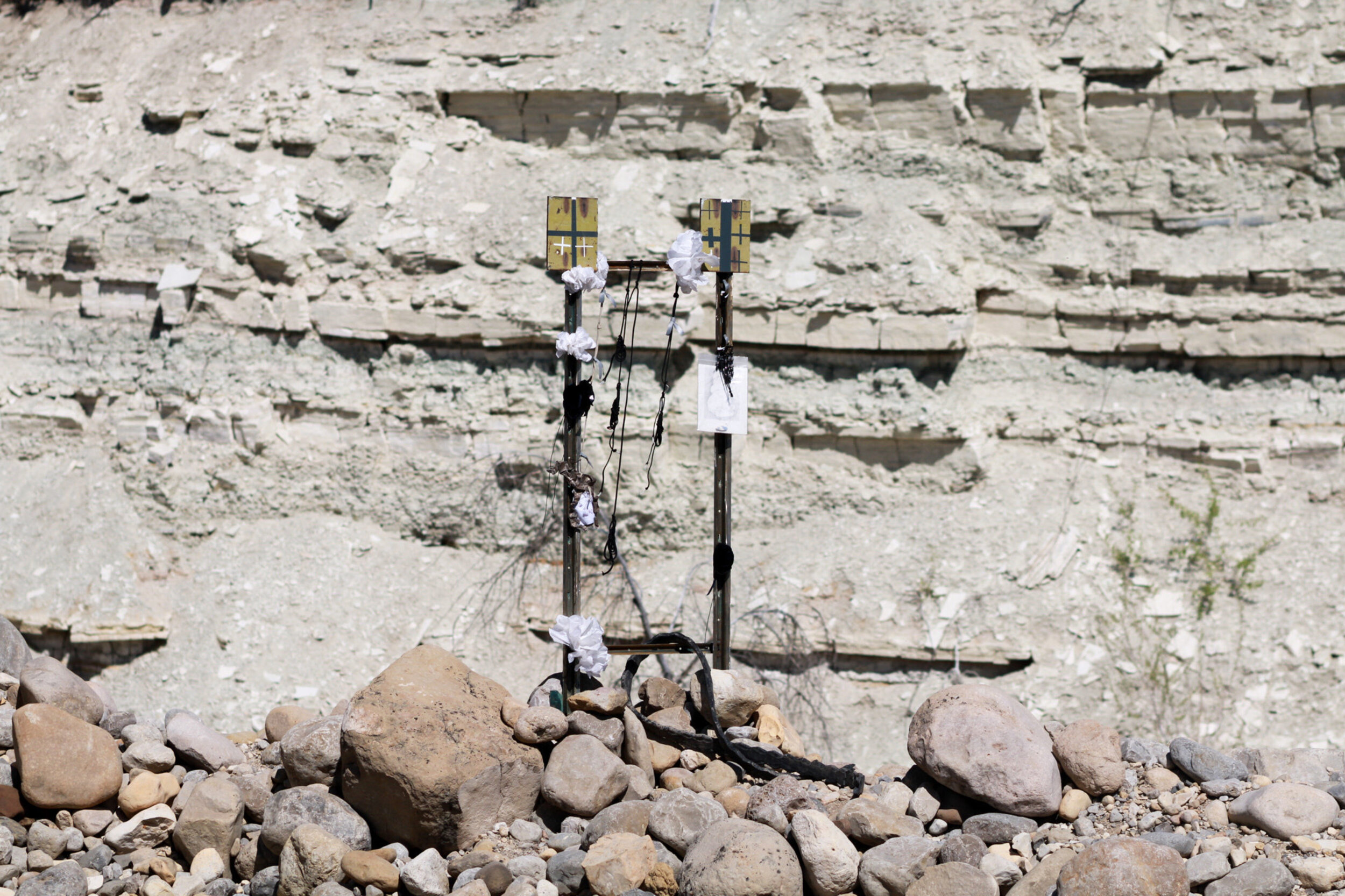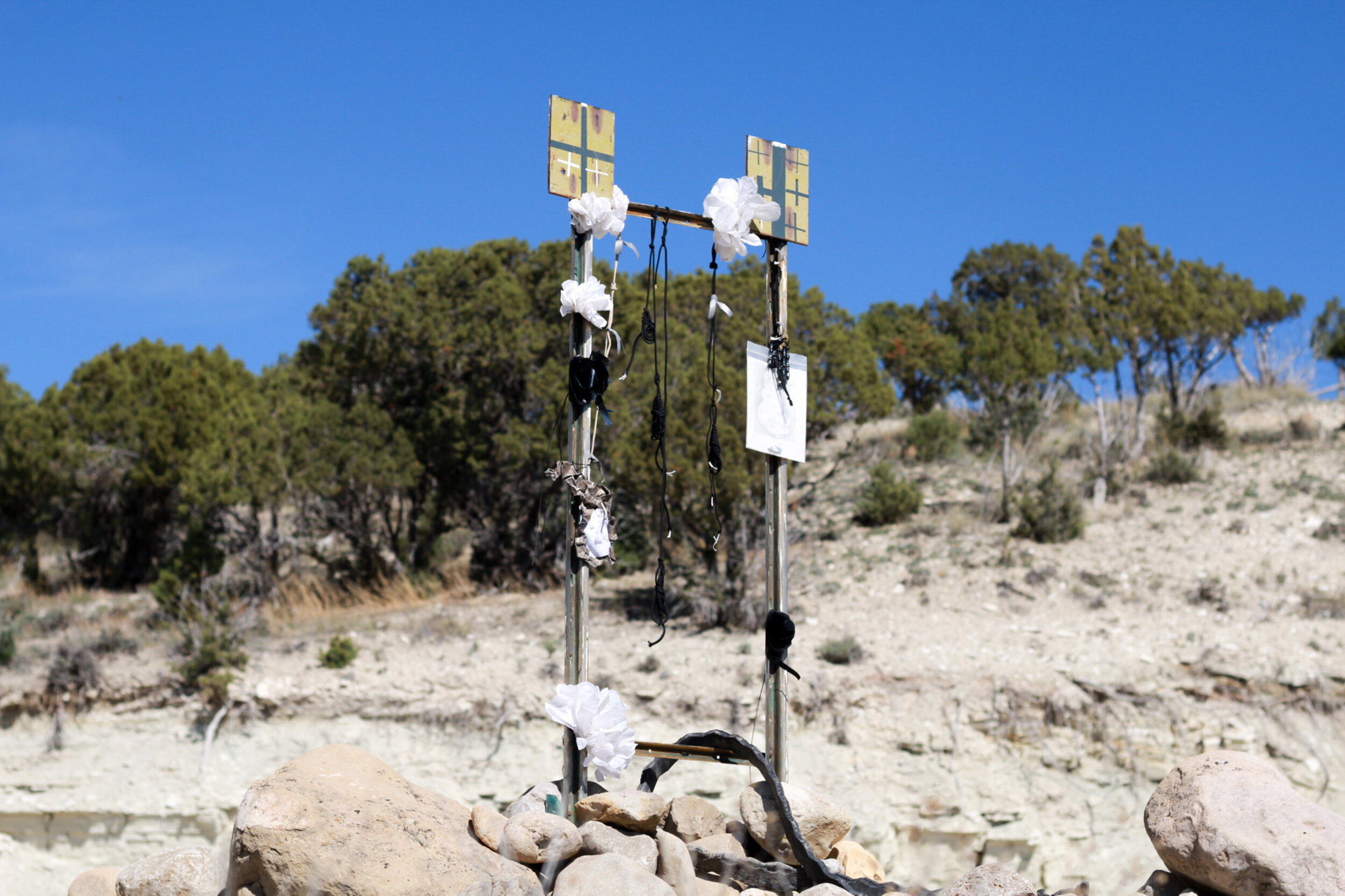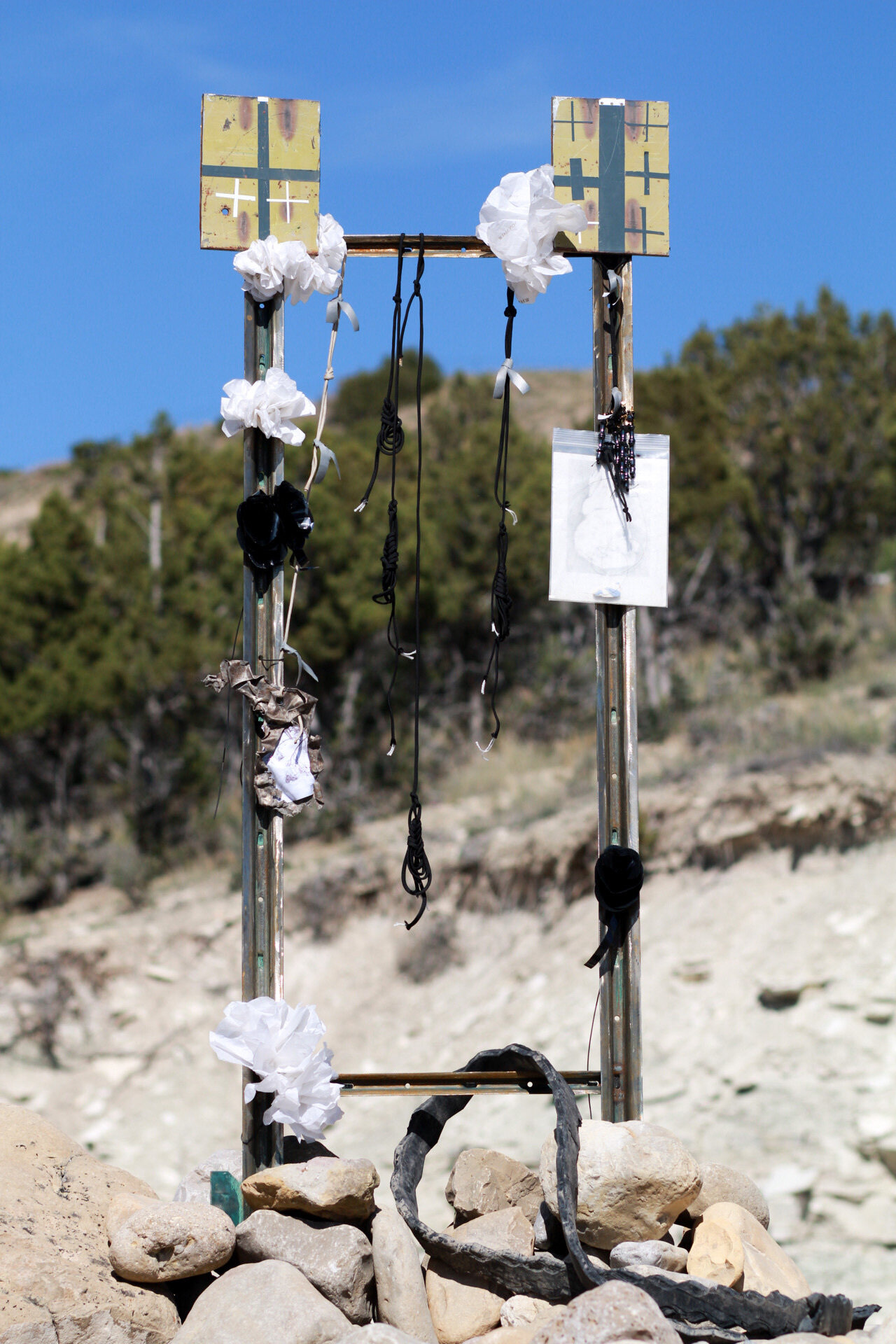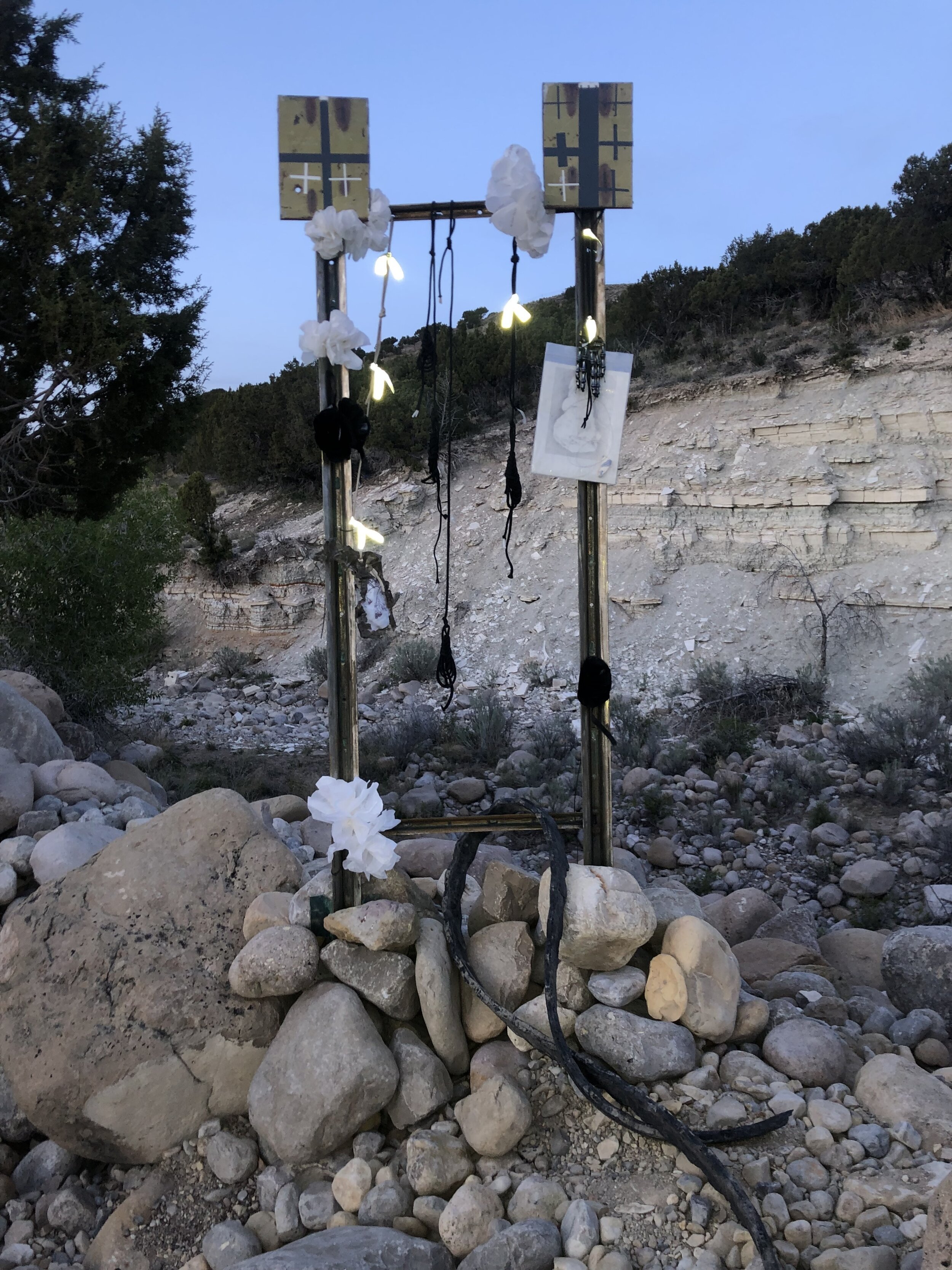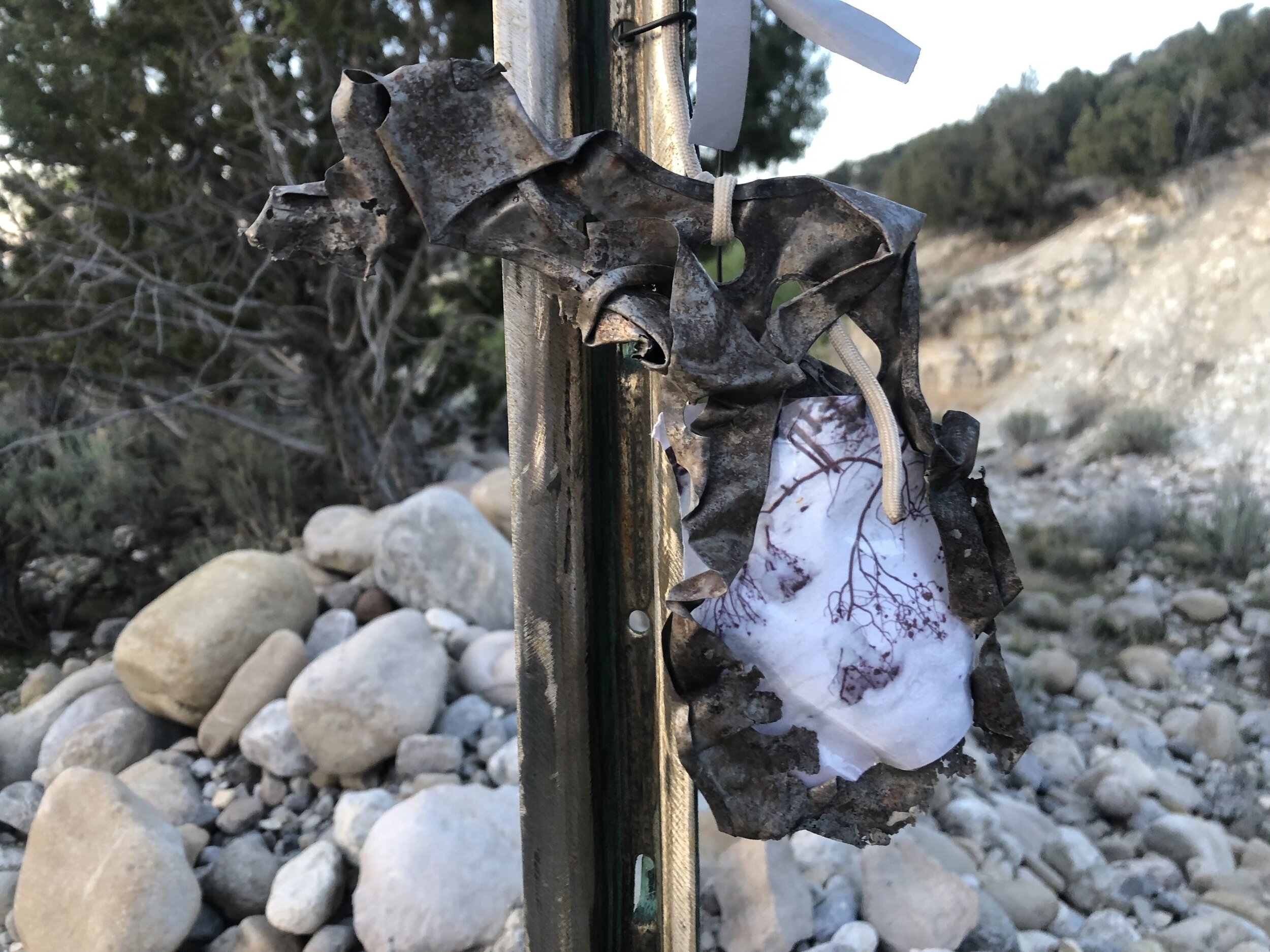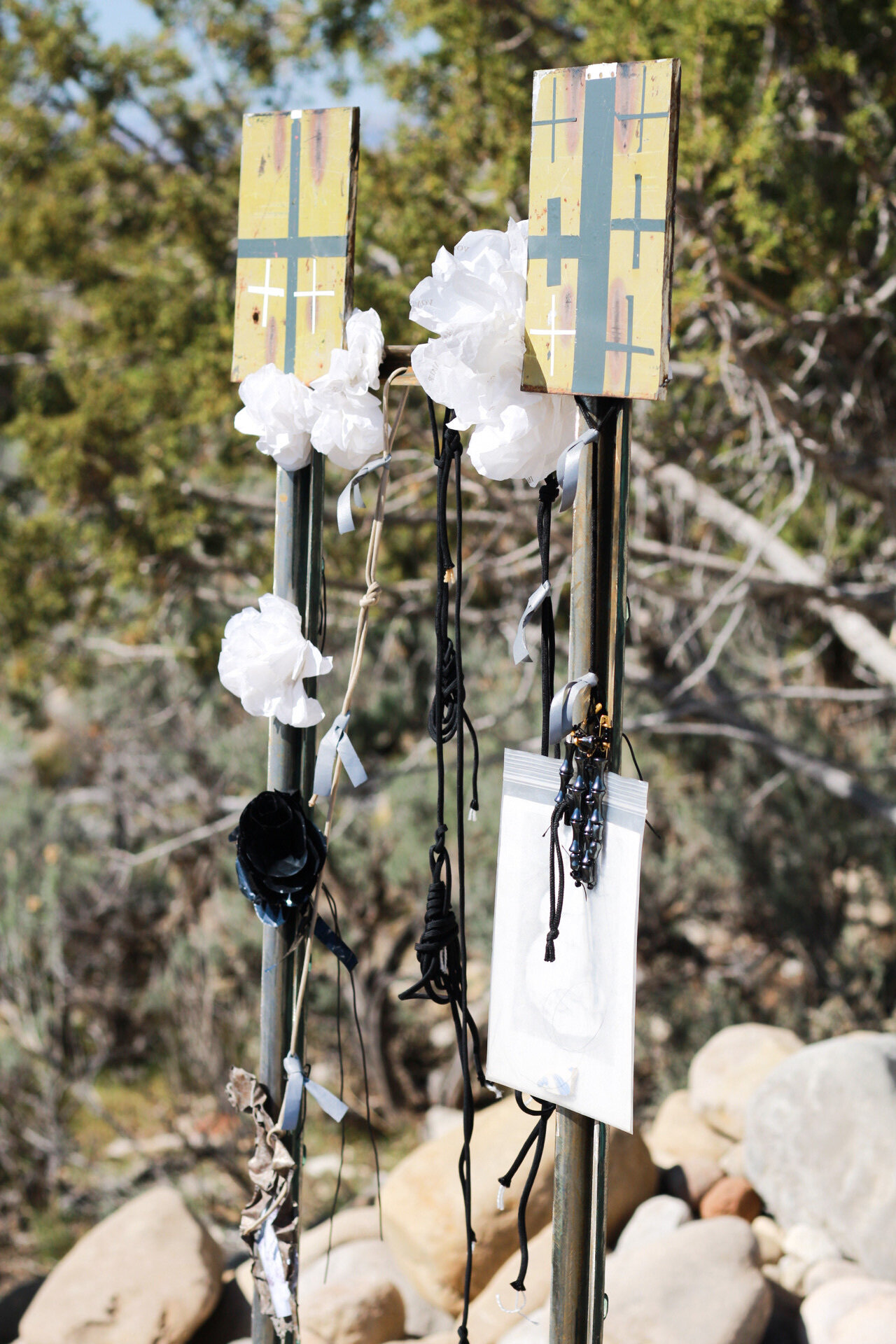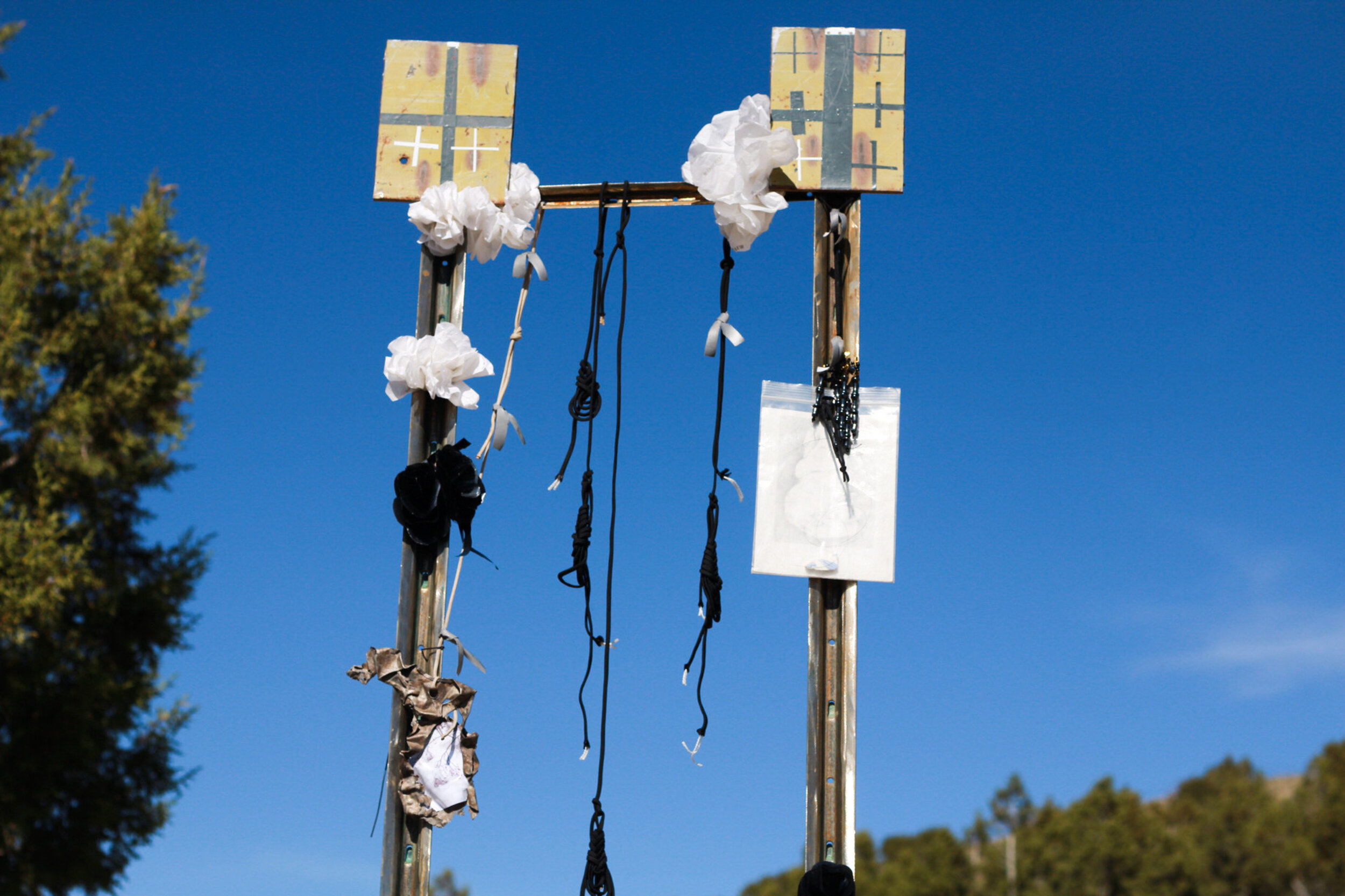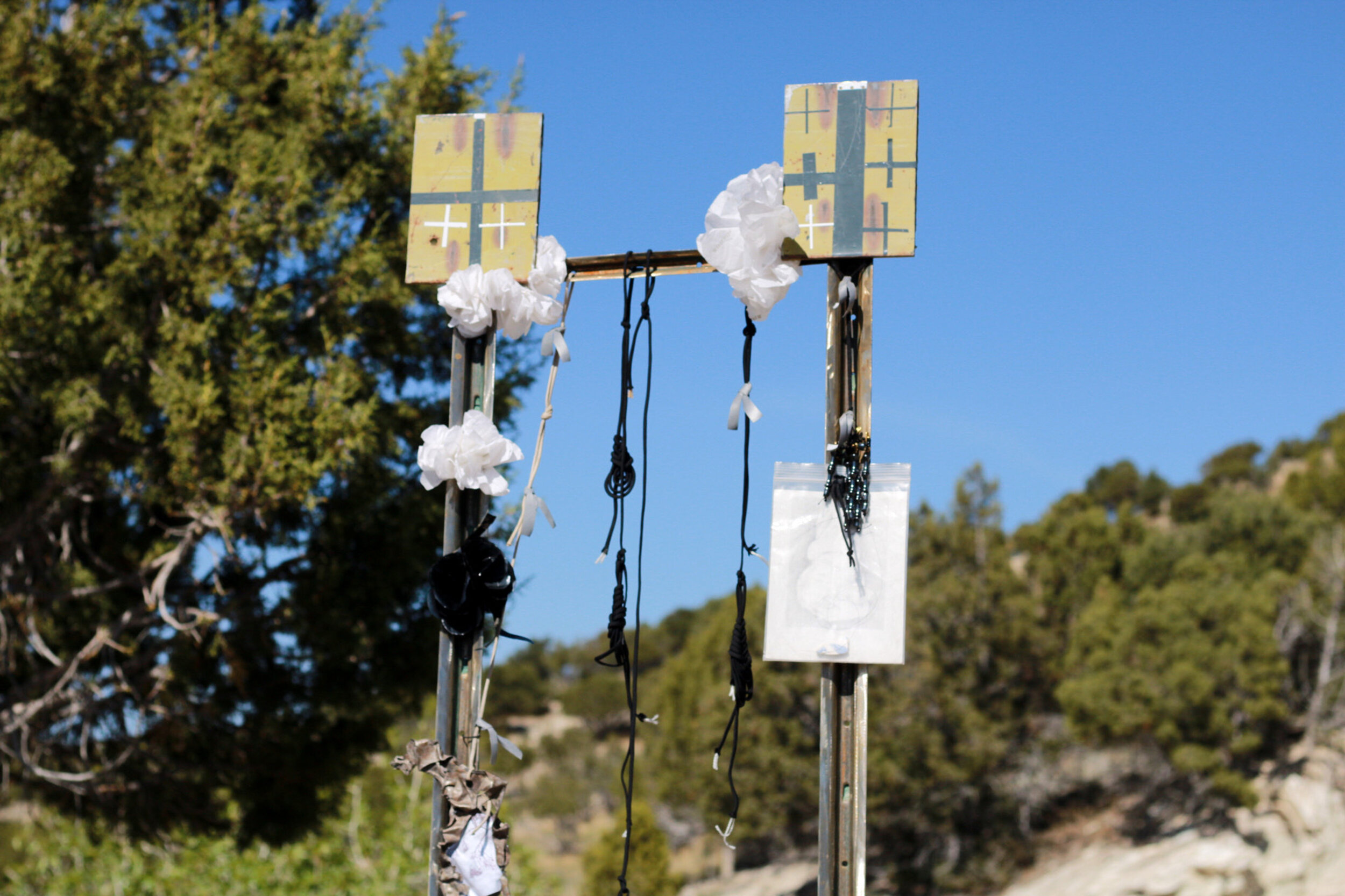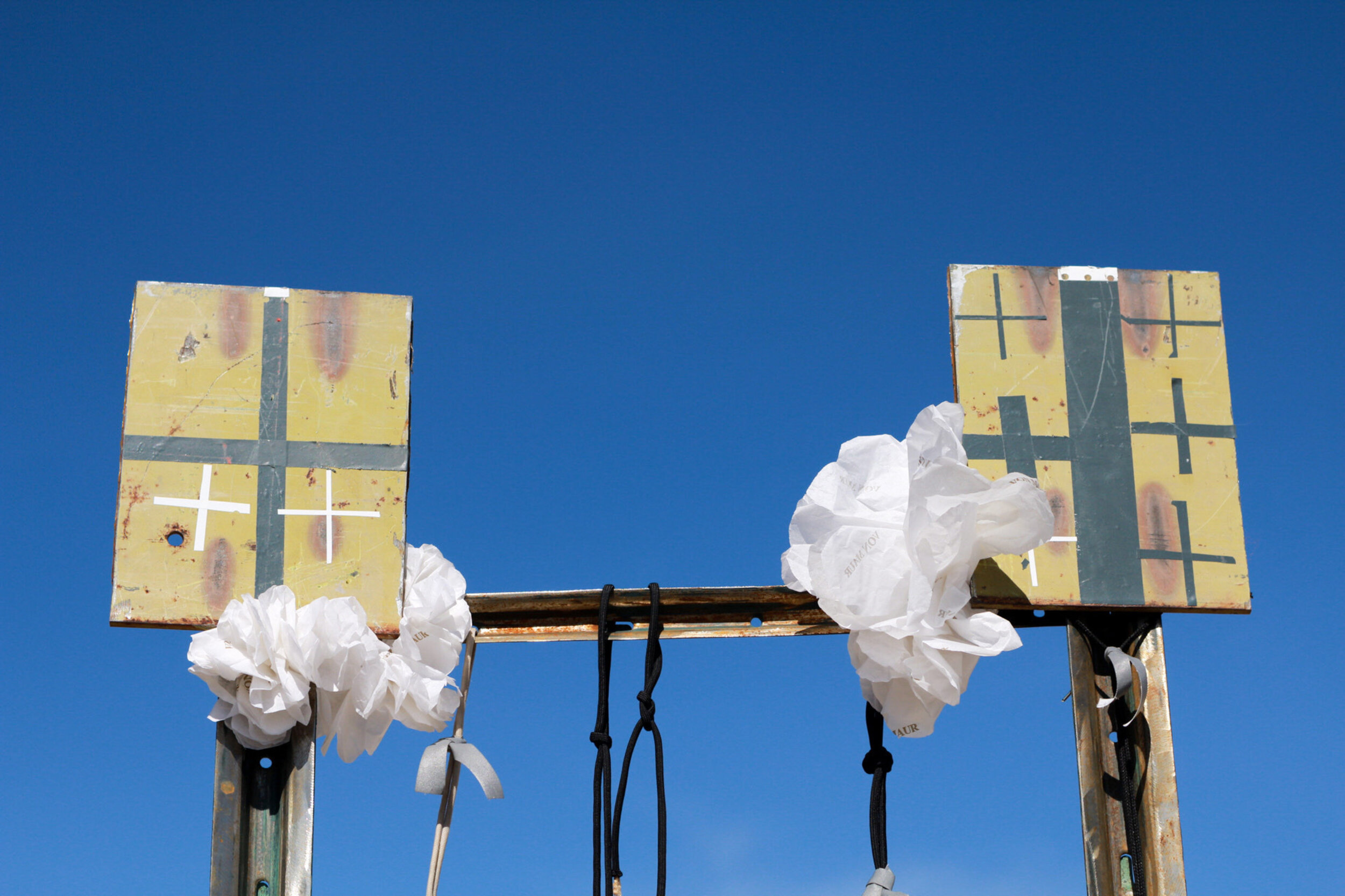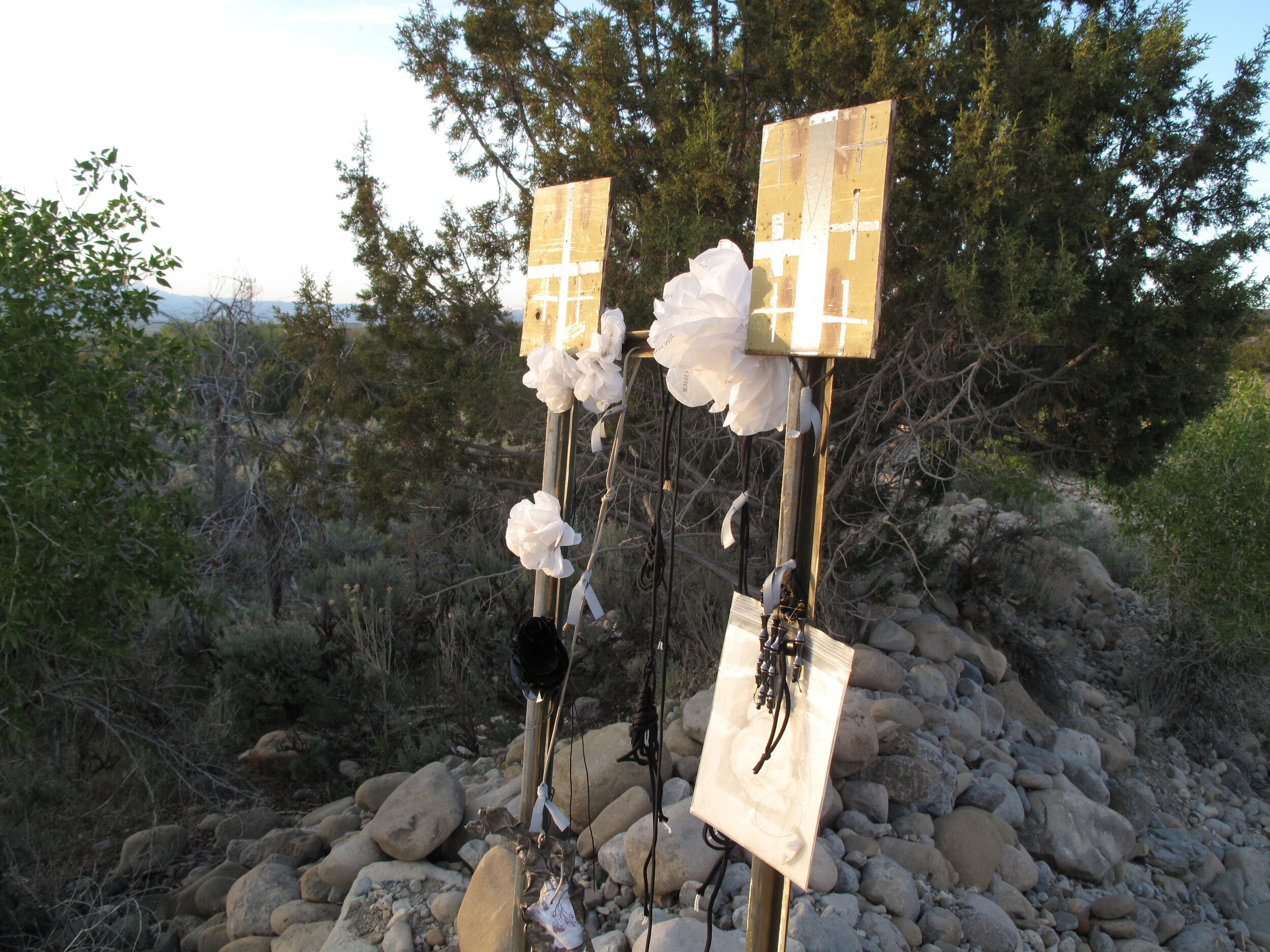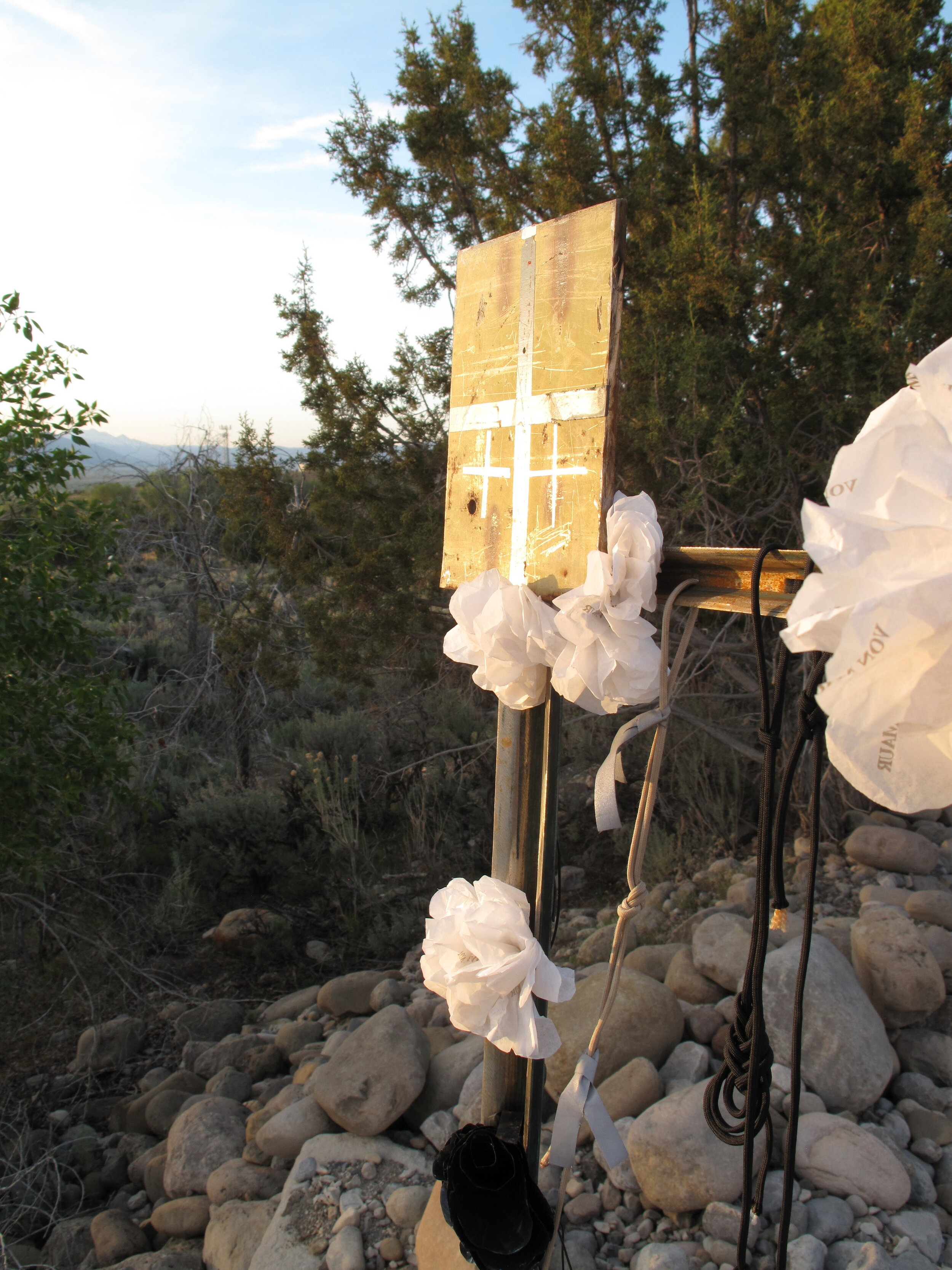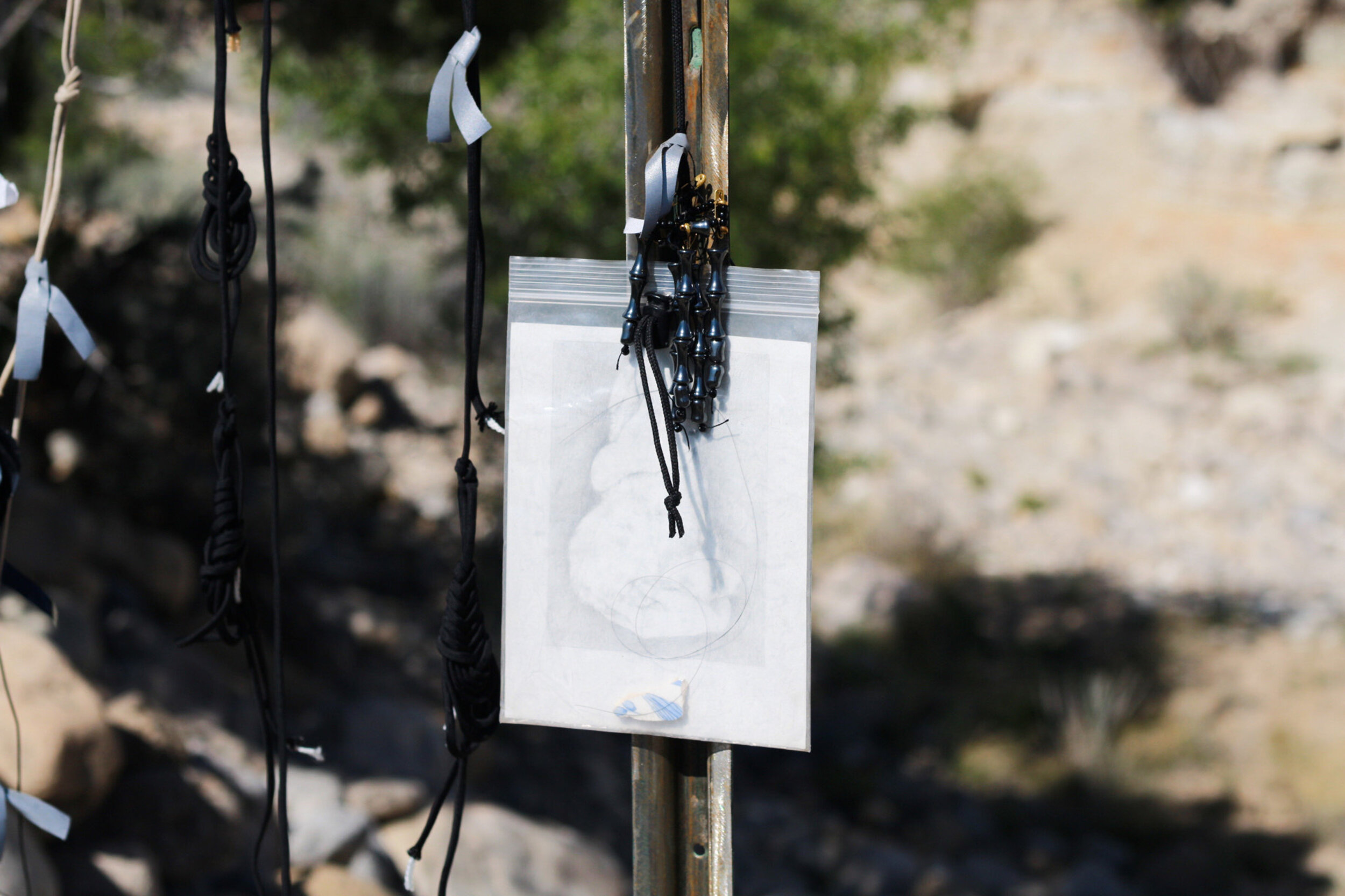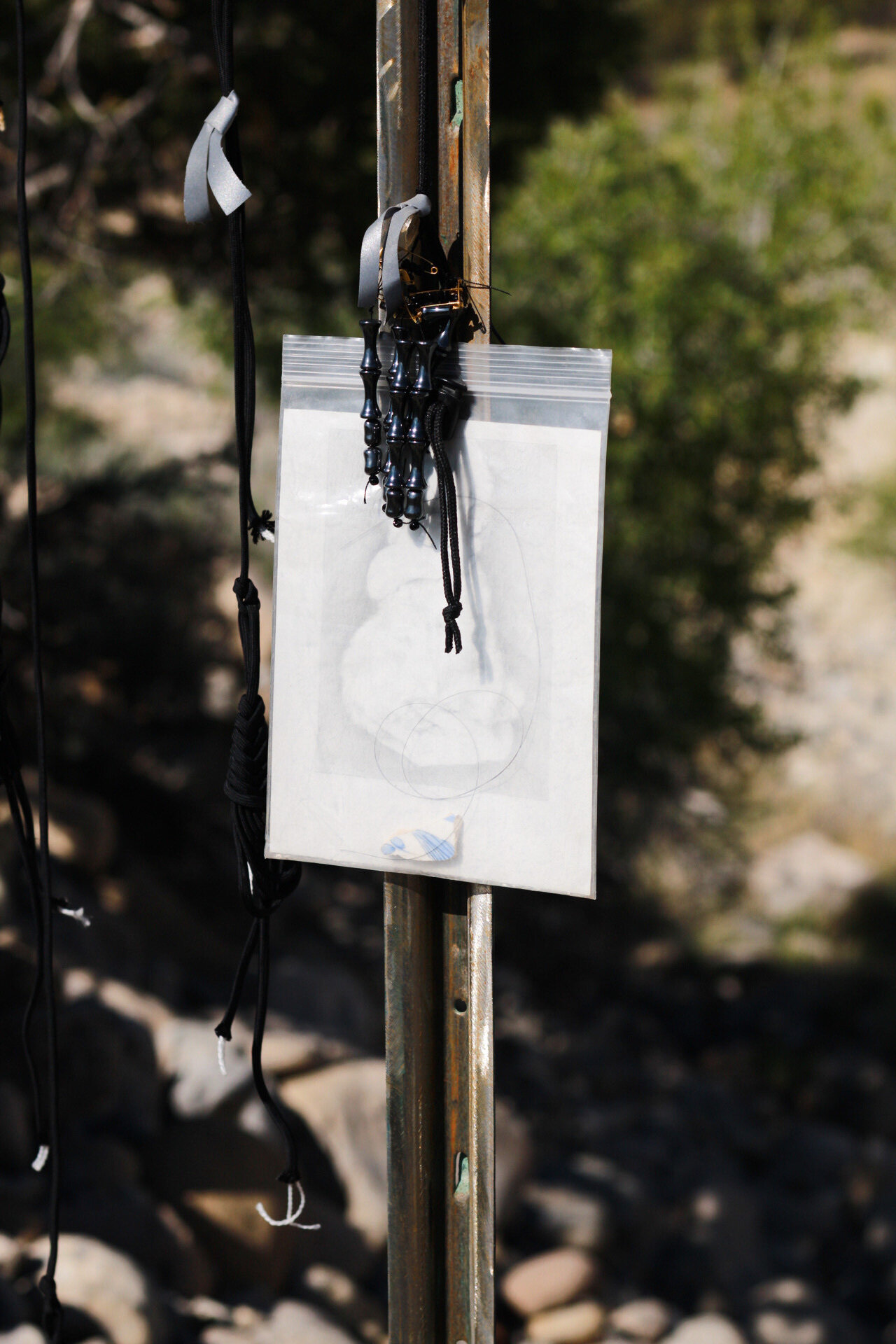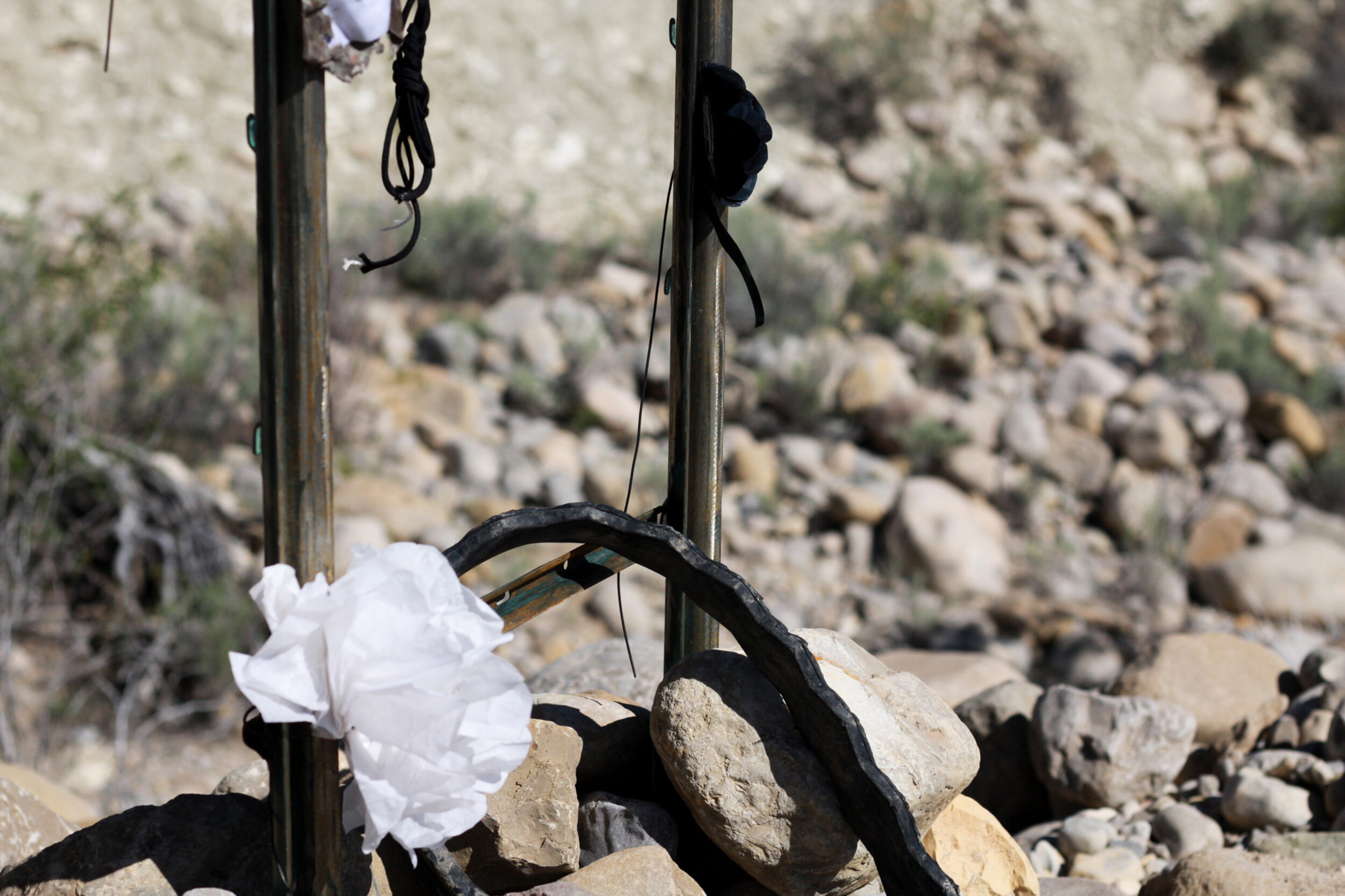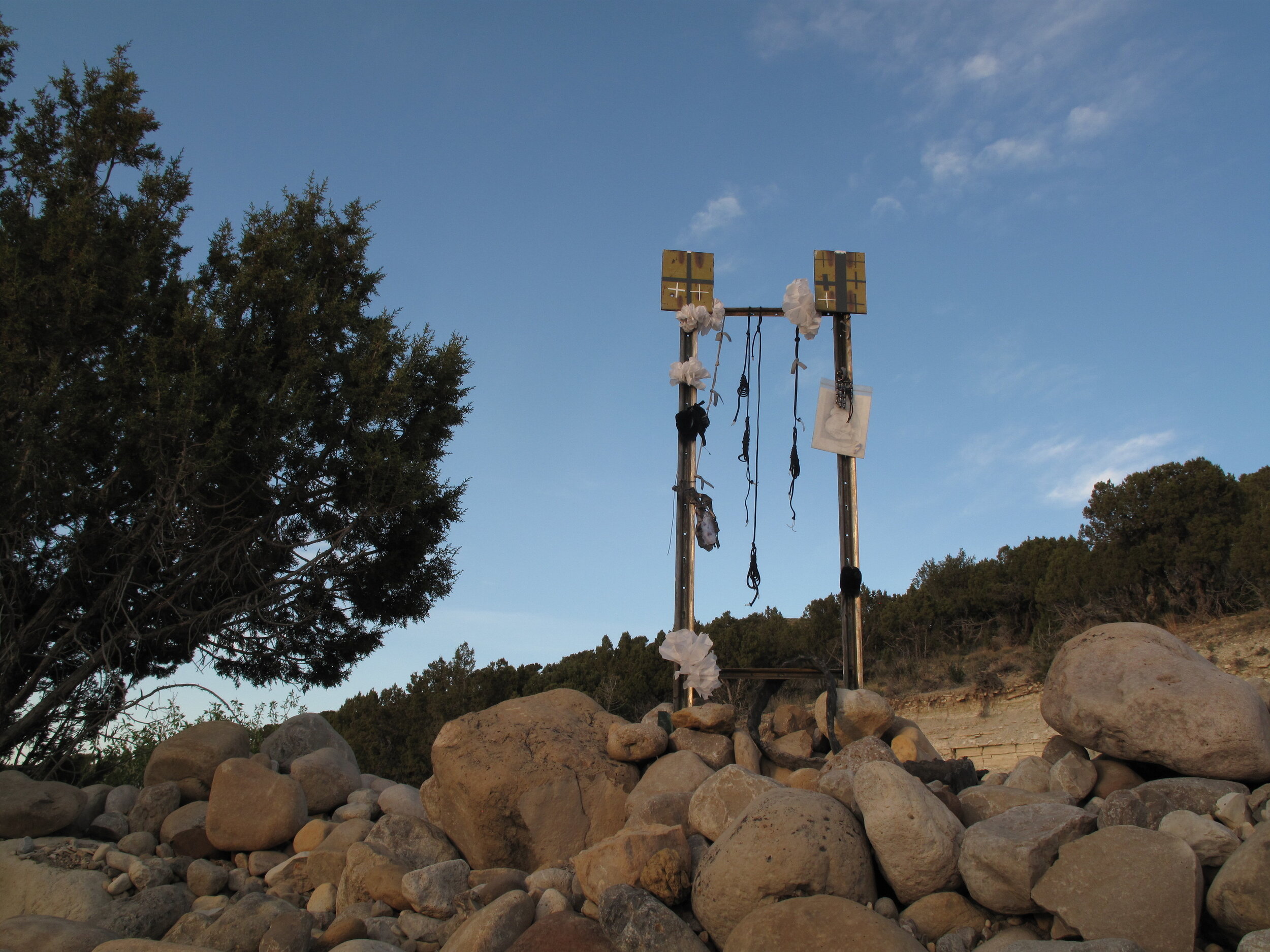Shoulder Blade
Rebecca R Peel
August 12, 2020
@
Final Hot Desert
Ephraim
Utah
Just a few miles from the town center is a site known locally and colloquially as the flesh pit. Roadkill is dumped here. Uphill, a wall of rocks—historical function vague, but on the whole representative of and testament to our collective petrophilia. We plant arcades of commemoration just as vague because we do not know why, exactly, our experience of saudade—so we speculate and transfer it into monument. This, we suppose, is how to make some peace with the fabricated and venerated concidentia oppositorium of oil culture.
If it’s a mechanism for mourning, maybe it’s an entangled aesthetic impulse. The distance between things has already been wrought; hyperactive and hypermigratory is how we see ourselves. Inside the metal is a microcosm of temperature-controlled detachment – path toward glamorizing of peril is as shiny, searing and straight as the asphalt ribbons and strewn tape fluttering on its shoulders.
Then again: everything will be dust-covered, rust-covered, frayed, and fractured in the end.
A primary critical emphasis from within road culture has grown up around the concept—and the ordinary experience—of roadkill, which indexes the habitat loss and damage to non-human life exercised by cars. Roadkill testifies to the car’s power to bring the organic excess of living and dying bodies into the sphere of “privatized mobility” that Raymond Williams recognizes as the modern media complex. Marshall McLuhan described automobiles as “hot media,” meaning media that so completely stimulates the human senses that it obviates the need of thinking or the perception of distance from the pleasure-giving object. Yet how many family road trips have been rudely interrupted by the vision of a domestic pet mangled on the side of the road? Or, still worse, by a potentially fatal collision with a wild animal such as a deer? Roadkill speaks of the animal, in the broad sense of the mortality that even modern media cannot resolve, For the cultural historian Brian Ladd, “roadkill” indicates whatever gets in the way of the modern progress narrative of creative destruction, where capital moves rapidly to new sites of cheap and efficient production, leaving a trail of defunct manufacturing sites and regional laborers in its wake. Roadkill speaks to externalities and friction, to hidden costs and unexpected impediments. … Roadkill, under the scrutiny of [this] lens is us, the fragility of our own bodies in the shadow of the internal combustion engine and the tons of steel that define everyday movement in cars.
From “The Aesthetics of Petroleum” in Living Oil, Stephanie LeMenager
By no other species except man will the animal’s look be recognized as familiar. Other animals are held by the look. Man becomes aware of himself returning the look.
The animal scrutinizes him across a narrow abyss of non-comprehension. This is why the man can surprise the animal. Yet the animal – even if domesticated – can also surprise the man. The man too is looking across a similar, but not identical, abyss of non-comprehension…he is always looking across ignorance and fear.
What man has to do in order to transcend the animal, to transcend the mechanical within himself, and what his unique spirituality leads to, is often anguish. And so, by comparison and despite the model of the machine, the animal seems to him to enjoy a kind of innocence. The animal has bee emptied of experience and secrets, and this new invented ‘innocence’ begins to provoke in man a kind of nostalgia.
Although such nostalgia towards animals was an 18th-century invention, countless productive inventions were still necessary – the railway, electricity, the conveyor belt, the canning industry, the motor car, chemical fertilizers – before animals could be marginalized.
During the 20th century, the internal combustion engine displaced draught animals in streets and factories. Cities, growing at an ever increasing rate, transformed the surrounding countryside into suburbs where field animals, wild or domesticated, became rare. The commercial exploitation of certain species (bison, tigers, reindeer) has rendered them almost extinct. Such wild life as remains is increasingly confined to national parks and game reserves.
Eventually, Descarte’s model was surpassed. In the first stages of the industrial revolution, animals were used as machines…later, in the so-called post-industrial societies, they are treated as raw material.
This reduction of the animal, which has a theoretical as well as an economic history, is part of the same process as that by which men have been reduced to isolated productive and consuming units. Indeed, during this period an approach to animals often pre-figured an approach to man. The mechanical view of the animals work capacity was later applied to that of the workers.
From “Why Look at Animals” in About Looking, John Berger

